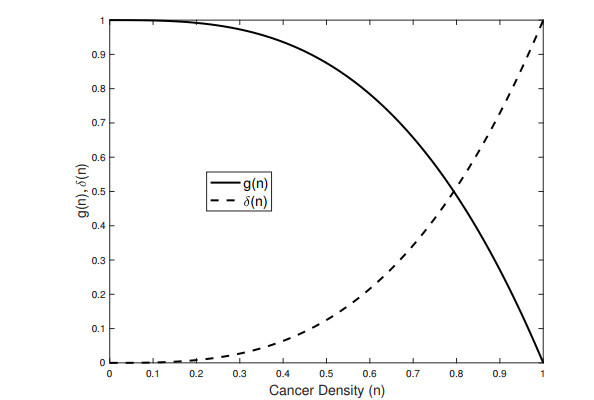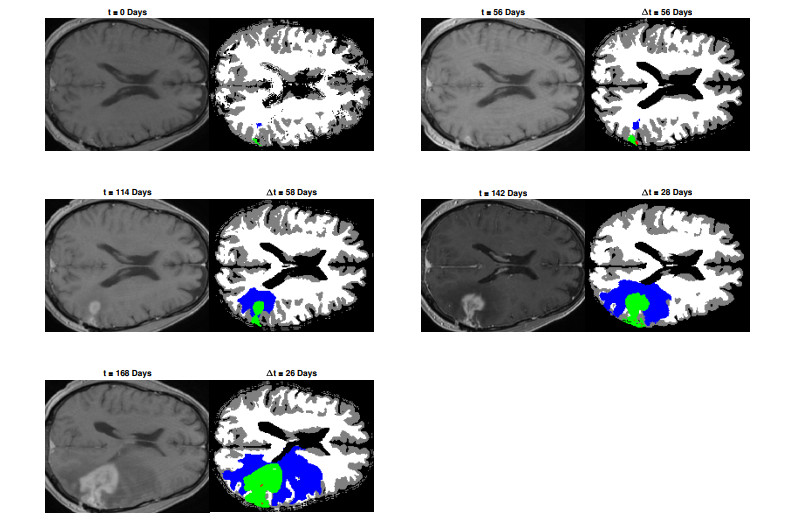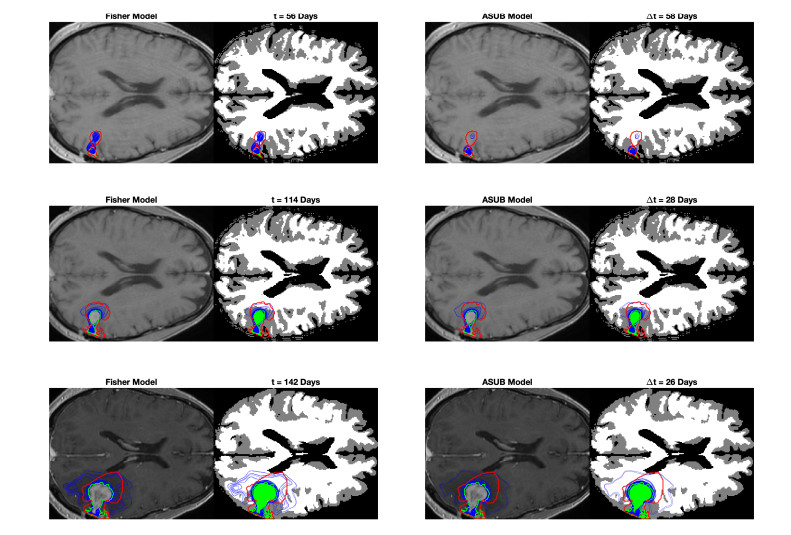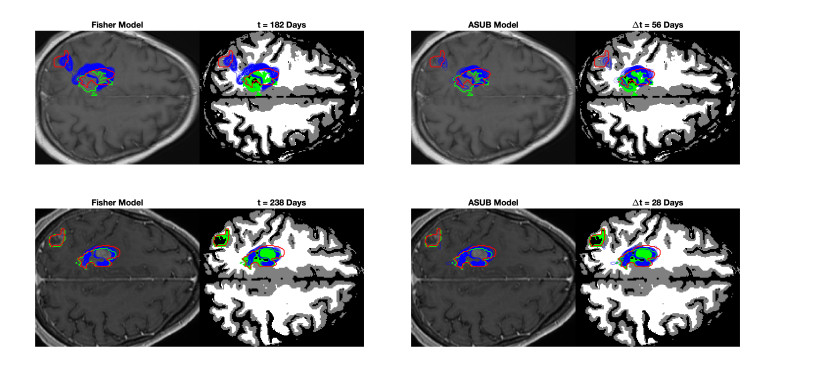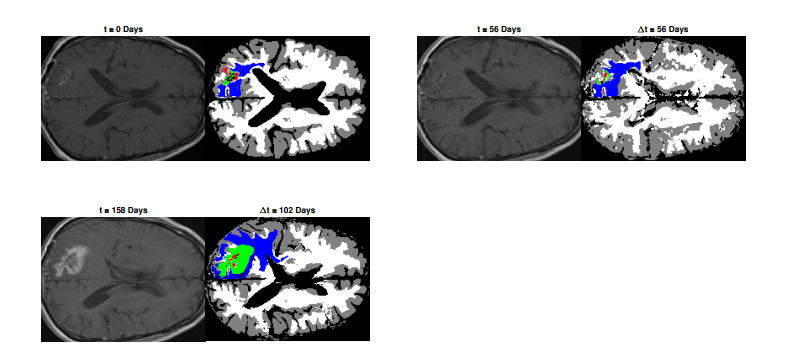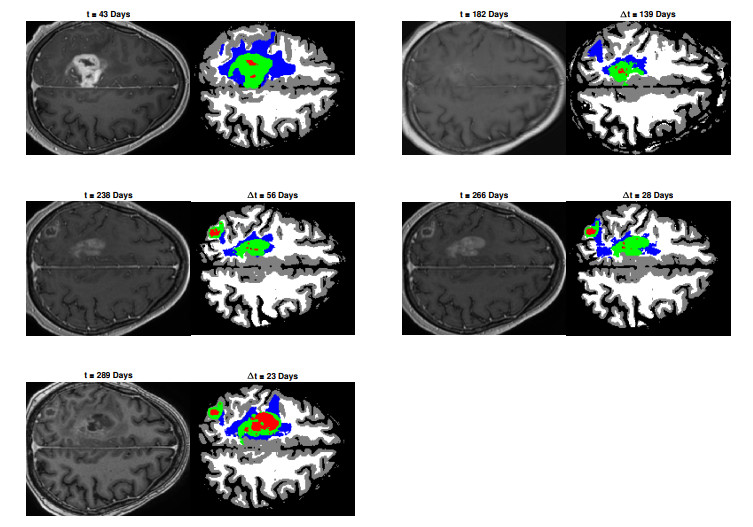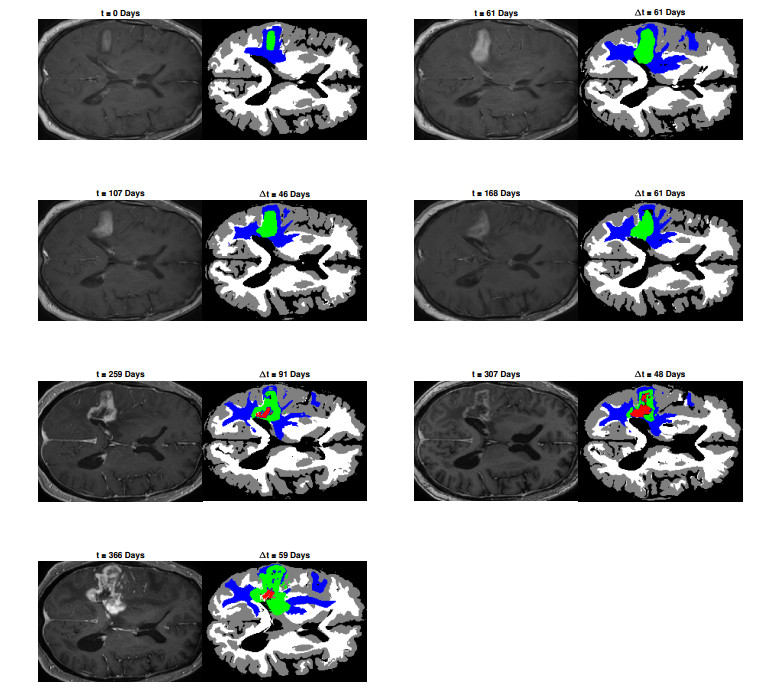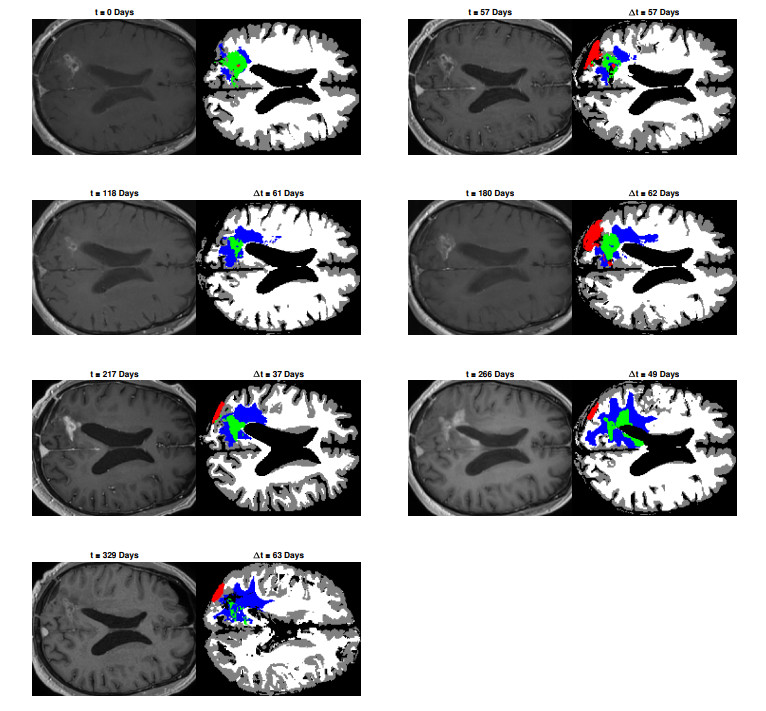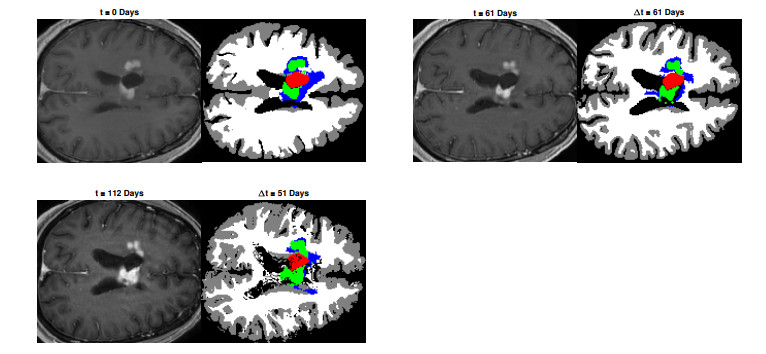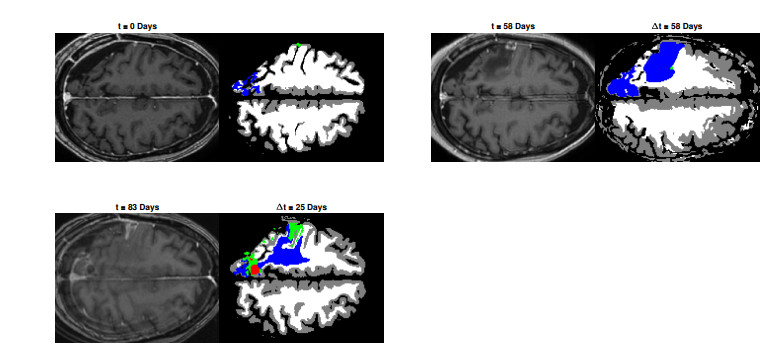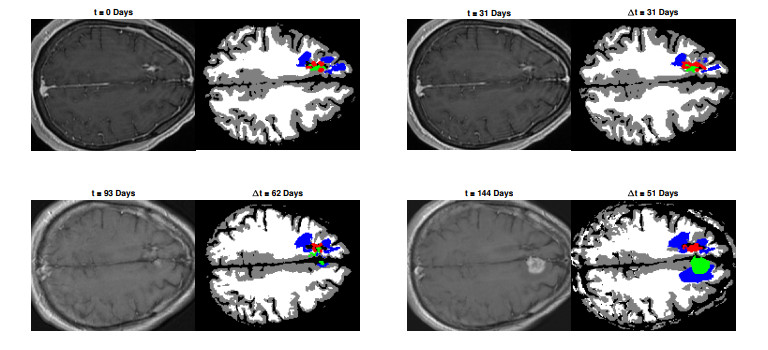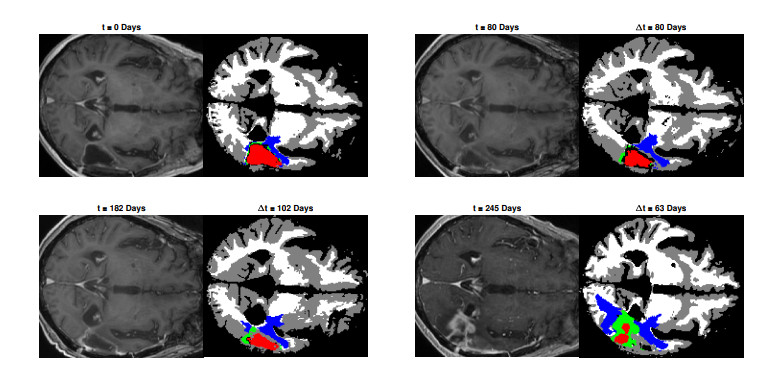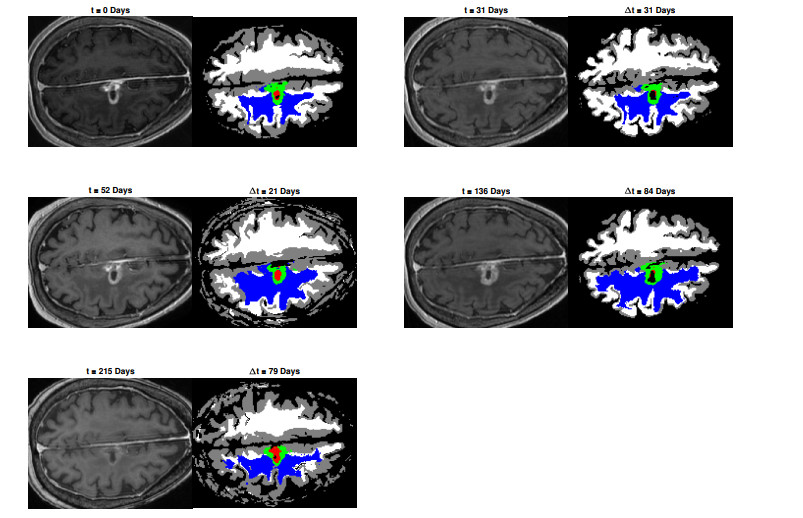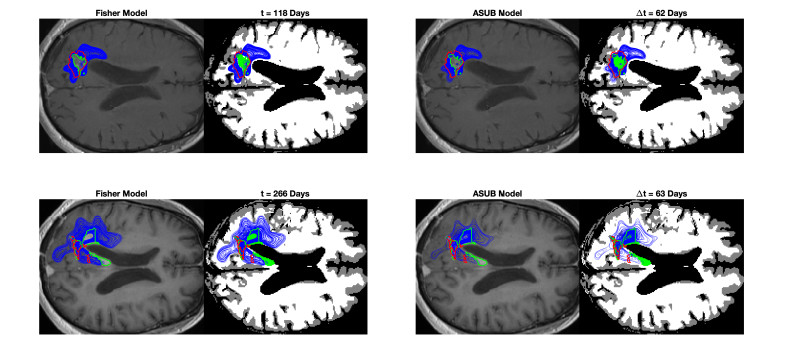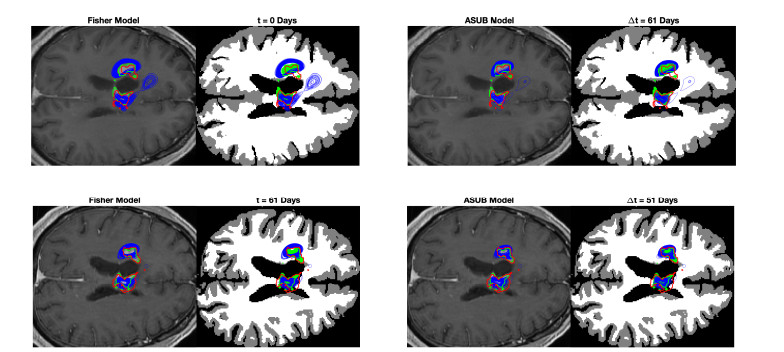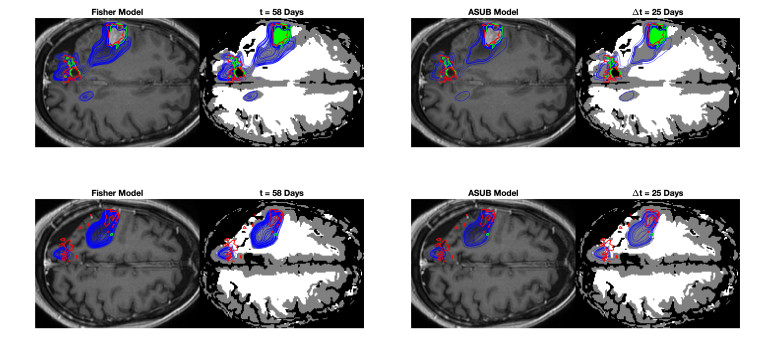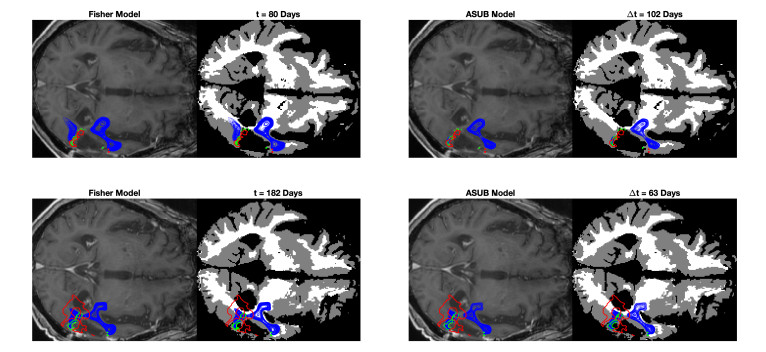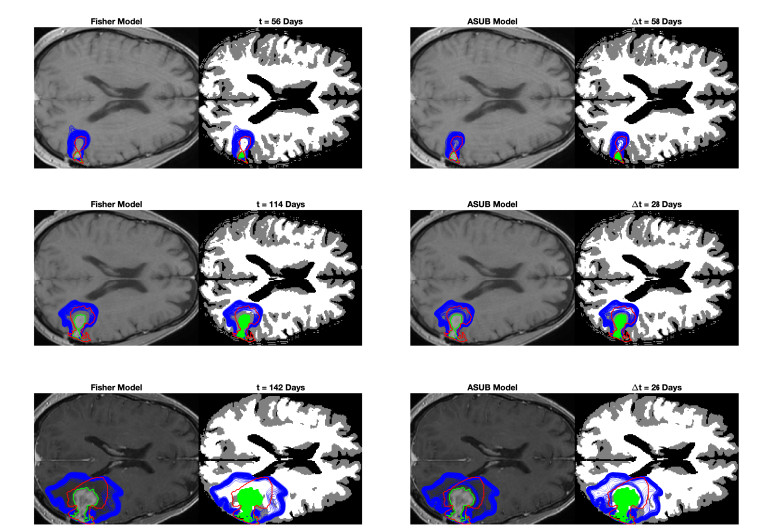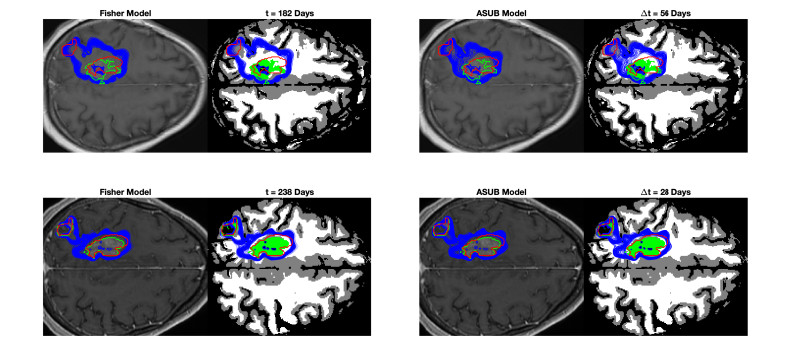| 1.
|
Klaus B. Lengeler, Vratislav Stovicek, Ross T. Fennessy, Michael Katz, Jochen Förster,
Never Change a Brewing Yeast? Why Not, There Are Plenty to Choose From,
2020,
11,
1664-8021,
10.3389/fgene.2020.582789
|
|
| 2.
|
David A I Suter, Ferenc Békés,
Who is to blame for the increasing prevalence of dietary sensitivity to wheat?,
2021,
49,
0133-3720,
1,
10.1007/s42976-020-00114-0
|
|
| 3.
|
Clara Navarrete, José L. Martínez,
Non-conventional yeasts as superior production platforms for sustainable fermentation based bio-manufacturing processes,
2020,
7,
2375-1495,
289,
10.3934/bioeng.2020024
|
|
| 4.
|
M. Danouche, H. El Arroussi, W. Bahafid, N. El Ghachtouli,
An overview of the biosorption mechanism for the bioremediation of synthetic dyes using yeast cells,
2021,
10,
2162-2515,
58,
10.1080/21622515.2020.1869839
|
|
| 5.
|
Jennifer Molinet, Francisco A. Cubillos,
Wild Yeast for the Future: Exploring the Use of Wild Strains for Wine and Beer Fermentation,
2020,
11,
1664-8021,
10.3389/fgene.2020.589350
|
|
| 6.
|
Katharina Rosam, Brian C. Monk, Michaela Lackner,
Sterol 14α-Demethylase Ligand-Binding Pocket-Mediated Acquired and Intrinsic Azole Resistance in Fungal Pathogens,
2020,
7,
2309-608X,
1,
10.3390/jof7010001
|
|
| 7.
|
Kwanruthai Malairuang, Morakot Krajang, Jatuporn Sukna, Krongchan Rattanapradit, Saethawat Chamsart,
High Cell Density Cultivation of Saccharomyces cerevisiae with Intensive Multiple Sequential Batches Together with a Novel Technique of Fed-Batch at Cell Level (FBC),
2020,
8,
2227-9717,
1321,
10.3390/pr8101321
|
|
| 8.
|
Monica Di Paola, Niccolò Meriggi, Duccio Cavalieri,
Applications of Wild Isolates of Saccharomyces Yeast for Industrial Fermentation: The Gut of Social Insects as Niche for Yeast Hybrids’ Production,
2020,
11,
1664-302X,
10.3389/fmicb.2020.578425
|
|
| 9.
|
Rosana Chiva, Lorena Celador-Lera, José Antonio Uña, Ana Jiménez-López, María Espinosa-Alcantud, Enrique Mateos-Horganero, Soledad Vega, María Ángeles Santos, Encarna Velázquez, Mercedes Tamame,
Yeast Biodiversity in Fermented Doughs and Raw Cereal Matrices and the Study of Technological Traits of Selected Strains Isolated in Spain,
2020,
9,
2076-2607,
47,
10.3390/microorganisms9010047
|
|
| 10.
|
Niccolo’ Meriggi, Monica Di Paola, Duccio Cavalieri, Irene Stefanini,
Saccharomyces cerevisiae – Insects Association: Impacts, Biogeography, and Extent,
2020,
11,
1664-302X,
10.3389/fmicb.2020.01629
|
|
| 11.
|
Jiwon Kim, Phuong Hoang Nguyen Tran, Sun-Mi Lee,
Current Challenges and Opportunities in Non-native Chemical Production by Engineered Yeasts,
2020,
8,
2296-4185,
10.3389/fbioe.2020.594061
|
|
| 12.
|
Wiktoria Liszkowska, Joanna Berlowska,
Yeast Fermentation at Low Temperatures: Adaptation to Changing Environmental Conditions and Formation of Volatile Compounds,
2021,
26,
1420-3049,
1035,
10.3390/molecules26041035
|
|
| 13.
|
Jinjin Peng, Luan Wang, Mengge Wang, Rui Du, Shangshang Qin, Cheng-Yun Jin, Yongjun Wei,
Yeast Synthetic Biology for the Production of Lycium barbarum Polysaccharides,
2021,
26,
1420-3049,
1641,
10.3390/molecules26061641
|
|
| 14.
|
Elena Benisvy-Aharonovich, Anat Zandany, Abed Saady, Yael Kinel-Tahan, Yaron Yehoshua, Aharon Gedanken,
An efficient method to produce 1,4-pentanediol from the biomass of the algae Chlorella ohadi with levulinic acid as intermediate,
2020,
11,
2589014X,
100514,
10.1016/j.biteb.2020.100514
|
|
| 15.
|
Erdem Carsanba, Manuela Pintado, Carla Oliveira,
Fermentation Strategies for Production of Pharmaceutical Terpenoids in Engineered Yeast,
2021,
14,
1424-8247,
295,
10.3390/ph14040295
|
|
| 16.
|
G.P. Dillon, A. Yiannikouris, C.A. Moran,
Toxicological evaluation of a glycan preparation from an enzymatic hydrolysis of Saccharomyces cerevisiae,
2021,
02732300,
104924,
10.1016/j.yrtph.2021.104924
|
|
| 17.
|
Yejin Ahn, Singeun Kim, Hyung Joo Suh, Eun Young Jung,
Toxicity Evaluation by Single and Repeated Administration of Yeast Hydrolysate DNF-10,
2021,
26,
2287-1098,
75,
10.3746/pnf.2021.26.1.75
|
|
| 18.
|
Ipsita Pujari, Abitha Thomas, Vidhu Sankar Babu,
Native and non-native host assessment towards metabolic pathway reconstructions of plant natural products,
2021,
30,
2215017X,
e00619,
10.1016/j.btre.2021.e00619
|
|
| 19.
|
Michael J. Bradshaw, Holly P. Bartholomew, Jorge M. Fonseca, Verneta L. Gaskins, Dov Prusky, Wayne M. Jurick,
Delivering the goods: Fungal secretion modulates virulence during host–pathogen interactions,
2021,
17494613,
10.1016/j.fbr.2021.03.007
|
|
| 20.
|
Renan Eugênio Araujo Piraine, Vitória Sequeira Gonçalves, Alceu Gonçalves dos Santos Junior, Rodrigo Casquero Cunha, Pedro Machado Medeiros de Albuquerque, Neida Lucia Conrad, Fábio Pereira Leivas Leite,
Expression cassette and plasmid construction for Yeast Surface Display in Saccharomyces cerevisiae,
2021,
0141-5492,
10.1007/s10529-021-03142-w
|
|
| 21.
|
Kyung-Mi Jung, Jongbeom Park, Jueun Jang, Seok-Hwa Jung, Sang Han Lee, Soo Rin Kim,
Characterization of Cold-Tolerant Saccharomyces cerevisiae Cheongdo Using Phenotype Microarray,
2021,
9,
2076-2607,
982,
10.3390/microorganisms9050982
|
|
| 22.
|
Jin Xu, Mubasher Hussain, Wenfeng Su, Qian Yao, Guandong Yang, Yu Zhong, Lin Zhou, Xiaoting Huang, Zhixiang Wang, Quliang Gu, Yifei Ren, He Li,
Effects of novel cellulase (Cel 906) and probiotic yeast fermentation on antioxidant and anti-inflammatory activities of vine tea (Ampelopsis grossedentata),
2022,
10,
2296-4185,
10.3389/fbioe.2022.1006316
|
|
| 23.
|
Zarah Walsh-Korb,
Sustainability in Heritage Wood Conservation: Challenges and Directions for Future Research,
2021,
13,
1999-4907,
18,
10.3390/f13010018
|
|
| 24.
|
Mihaela Sbarciog, Philippe Bogaerts,
2022,
Observability and observers for baker's yeast growth with coordinated uptake of glucose and ammonium,
978-1-6654-6746-9,
86,
10.1109/ICSTCC55426.2022.9931804
|
|
| 25.
|
Debkumar Chakraborty, Sulogna Chatterjee, Avanthi Althuri, Sankar Ganesh Palani, S. Venkata Mohan,
Sustainable enzymatic treatment of organic waste in a framework of circular economy,
2023,
370,
09608524,
128487,
10.1016/j.biortech.2022.128487
|
|
| 26.
|
Ji Sung Cho, Hye Ji Oh, Young Eun Jang, Hyun Jin Kim, Areum Kim, Jong‐Am Song, Eun Jung Lee, Jeewon Lee,
Synthetic pro‐peptide design to enhance the secretion of heterologous proteins by
Saccharomyces cerevisiae
,
2022,
11,
2045-8827,
10.1002/mbo3.1300
|
|
| 27.
|
Vincent Vineeth Leo, Vinod Viswanath, Purbajyoti Deka, Dwivedi Rohini Ramji, Lallawmsangi Pachuau, William Carrie, Yogesh Malvi, Garima Singh, Bhim Pratap Singh,
2021,
Chapter 12,
978-3-030-67560-8,
393,
10.1007/978-3-030-67561-5_12
|
|
| 28.
|
Nastaran Allahyari, Amir Kargaran, Ali Hosseiny, G. R. Jafari, Bryan C Daniels,
The structure balance of gene-gene networks beyond pairwise interactions,
2022,
17,
1932-6203,
e0258596,
10.1371/journal.pone.0258596
|
|
| 29.
|
David Lao-Martil, Koen Verhagen, Joep Schmitz, Bas Teusink, S. Wahl, Natal van Riel,
Kinetic Modeling of Saccharomyces cerevisiae Central Carbon Metabolism: Achievements, Limitations, and Opportunities,
2022,
12,
2218-1989,
74,
10.3390/metabo12010074
|
|
| 30.
|
Flávia da Silva Fernandes, Érica Simplício de Souza, Lívia Melo Carneiro, João Paulo Alves Silva, João Vicente Braga de Souza, Jacqueline da Silva Batista, Clemencia Chaves Lopez,
Current Ethanol Production Requirements for the Yeast Saccharomyces cerevisiae,
2022,
2022,
1687-9198,
1,
10.1155/2022/7878830
|
|
| 31.
|
Gboyega E. Adebami, Arindam Kuila, Obinna M. Ajunwa, Samuel A. Fasiku, Michael D. Asemoloye,
Genetics and metabolic engineering of yeast strains for efficient ethanol production,
2022,
45,
0145-8876,
10.1111/jfpe.13798
|
|
| 32.
|
Misun Lee, Jeroen Drenth, Milos Trajkovic, René M. de Jong, Marco W. Fraaije,
Introducing an Artificial Deazaflavin Cofactor in Escherichia coli and Saccharomyces cerevisiae,
2022,
11,
2161-5063,
938,
10.1021/acssynbio.1c00552
|
|
| 33.
|
Evgenia Savastru, Dumitru Bulgariu, Cătălin-Ioan Zamfir, Laura Bulgariu,
Application of Saccharomyces cerevisiae in the Biosorption of Co(II), Zn(II) and Cu(II) Ions from Aqueous Media,
2022,
14,
2073-4441,
976,
10.3390/w14060976
|
|
| 34.
|
Darren A Fenton, Stephen J Kiniry, Martina M Yordanova, Pavel V Baranov, John P Morrissey,
Development of a ribosome profiling protocol to study translation in Kluyveromyces marxianus
,
2022,
22,
1567-1364,
10.1093/femsyr/foac024
|
|
| 35.
|
Seyma Hande Tekarslan-Sahin,
Adaptive Laboratory Evolution of Yeasts for Aroma Compound Production,
2022,
8,
2311-5637,
372,
10.3390/fermentation8080372
|
|
| 36.
|
Olivier Perruchon, Isabelle Schmitz-Afonso, Carlos Afonso, Abdelhakim Elomri,
State-of-the-art in analytical methods for metabolic profiling of Saccharomyces cerevisiae,
2021,
170,
0026265X,
106704,
10.1016/j.microc.2021.106704
|
|
| 37.
|
Jongbeom Park, In Jung Kim, Soo Rin Kim,
Nonconventional Yeasts Engineered Using the CRISPR-Cas System as Emerging Microbial Cell Factories,
2022,
8,
2311-5637,
656,
10.3390/fermentation8110656
|
|
| 38.
|
Gamal M. Hamad, Amr Amer, Baher El-Nogoumy, Mohamed Ibrahim, Sabria Hassan, Shahida Anusha Siddiqui, Ahmed M. EL-Gazzar, Eman Khalifa, Sabrien A. Omar, Sarah Abd-Elmohsen Abou-Alella, Salam A. Ibrahim, Tuba Esatbeyoglu, Taha Mehany,
Evaluation of the Effectiveness of Charcoal, Lactobacillus rhamnosus, and Saccharomyces cerevisiae as Aflatoxin Adsorbents in Chocolate,
2022,
15,
2072-6651,
21,
10.3390/toxins15010021
|
|
| 39.
|
Sudip Dhakal, Ian Macreadie,
2022,
51,
9780128211779,
1,
10.1016/bs.mim.2022.02.001
|
|
| 40.
|
Yunjiao Liu, Yuyun Lu, Shao Quan Liu,
The potential of spent coffee grounds hydrolysates fermented with Torulaspora delbrueckii and Pichia kluyveri for developing an alcoholic beverage: The yeasts growth and chemical compounds modulation by yeast extracts,
2021,
4,
26659271,
489,
10.1016/j.crfs.2021.07.004
|
|
| 41.
|
Eleni Bozinou, Vassilis Athanasiadis, Theodoros Chatzimitakos, Christos Ganos, Olga Gortzi, Panagiota Diamantopoulou, Seraphim Papanikolaou, Ioanna Chinou, Stavros I. Lalas,
Essential Oil of Greek Citrus sinensis cv New Hall - Citrus aurantium Pericarp: Effect upon Cellular Lipid Composition and Growth of Saccharomyces cerevisiae and Antimicrobial Activity against Bacteria, Fungi, and Human Pathogenic Microorganisms,
2023,
11,
2227-9717,
394,
10.3390/pr11020394
|
|
| 42.
|
Xiaoqiu Xu, Tong Li, Ke Jin,
Bioinspired and Biomimetic Nanomedicines for Targeted Cancer Therapy,
2022,
14,
1999-4923,
1109,
10.3390/pharmaceutics14051109
|
|
| 43.
|
Chunyang Wei, Chengzhuang Yu, Shanshan Li, Tiejun Li, Jiyu Meng, Junwei Li,
Easy-to-Operate Co-Flow Step Emulsification Device for High-Throughput Three-Dimensional Cell Culture,
2022,
12,
2079-6374,
350,
10.3390/bios12050350
|
|
| 44.
|
Ivana Regecová, Boris Semjon, Pavlina Jevinová, Peter Očenáš, Jana Výrostková, Lucia Šuľáková, Erika Nosková, Slavomír Marcinčák, Martin Bartkovský,
Detection of Microbiota during the Fermentation Process of Wine in Relation to the Biogenic Amine Content,
2022,
11,
2304-8158,
3061,
10.3390/foods11193061
|
|
| 45.
|
Ana Sofia Oliveira, Joana Odila Pereira, Carlos Ferreira, Margarida Faustino, Joana Durão, Ana Margarida Pereira, Carla Maria Oliveira, Manuela E. Pintado, Ana P. Carvalho,
Spent Yeast Valorization for Food Applications: Effect of Different Extraction Methodologies,
2022,
11,
2304-8158,
4002,
10.3390/foods11244002
|
|
| 46.
|
Rostislav Boltyanskiy, Mary Ann Odete, Fook Chiong Cheong, Laura A. Philips,
Label-free viability assay using in-line holographic video microscopy,
2022,
12,
2045-2322,
10.1038/s41598-022-17098-y
|
|
| 47.
|
Eny Ida Riyanti, Edy Listanto,
2022,
2462,
0094-243X,
060006,
10.1063/5.0075157
|
|
| 48.
|
Carlos Escott, Cristian Vaquero, Carmen Lopez, Iris Loira, Juan Manuel Del Fresno, Antonio Morata,
Effect of acidification biotechnologies on the production of volatile compounds, lactic acid and colour in red wines after the use of pulsed light pretreatment in grapes,
2022,
248,
1438-2377,
2497,
10.1007/s00217-022-04064-1
|
|
| 49.
|
V.O. Onyema, O.C. Amadi, A.N. Moneke, R.C. Agu,
A Brief Review: Saccharomyces cerevisiae Biodiversity Potential and Promising Cell Factories for Exploitation in Biotechnology and Industry Processes – West African Natural Yeasts Contribution,
2023,
2,
2772753X,
100162,
10.1016/j.focha.2022.100162
|
|
| 50.
|
Kazuki Morimoto, Tai-Ying Chiou, Masaaki Konishi,
Torulaspora quercuum shows great potential for bioethanol production from macroalgal hydrolysate,
2022,
17,
2589014X,
100952,
10.1016/j.biteb.2022.100952
|
|
| 51.
|
Maria Fernanda da Silva Santos, Cyntia Silva Freitas, Giovani Carlo Verissimo da Costa, Patricia Ribeiro Pereira, Vania Margaret Flosi Paschoalin,
Identification of Antibacterial Peptide Candidates Encrypted in Stress-Related and Metabolic Saccharomyces cerevisiae Proteins,
2022,
15,
1424-8247,
163,
10.3390/ph15020163
|
|
| 52.
|
Ebru ÇÖTELİ, Fikret KARATAŞ,
Krom III klorür tuzuna maruz kalan mayalara C vitamini katılarak mayaların antioksidan enzimlerine etkisinin araştırılması,
2021,
2146-538X,
10.17714/gumusfenbil.909183
|
|
| 53.
|
Paola Di Gianvito, Vasileios Englezos, Kalliopi Rantsiou, Luca Cocolin,
Bioprotection strategies in winemaking,
2022,
364,
01681605,
109532,
10.1016/j.ijfoodmicro.2022.109532
|
|
| 54.
|
I.E. Mbaeyi-Nwa, N.F. Ezenwegbu,
Saccharomyces cerevisiae from Polymerase Chain Reaction (PCR) in Table Wine Using Tamarindus indica and Passiflora edulis Blends,
2022,
21,
1682296X,
134,
10.3923/biotech.2022.134.145
|
|
| 55.
|
Jaciane Lutz Ienczak, Isabela de Oliveira Pereira, Juliane Machado da Silveira,
2023,
Chapter 7,
978-3-031-17345-5,
185,
10.1007/978-3-031-17346-2_7
|
|
| 56.
|
Gislane Oliveira Ribeiro, Leticia de Alencar Pereira Rodrigues, Thiale Borges Silva dos Santos, João Pedro Santos Alves, Roseane Santos Oliveira, Tatiana Barreto Rocha Nery, Josiane Dantas Viana Barbosa, Milena Botelho Pereira Soares,
Innovations and developments in single cell protein: Bibliometric review and patents analysis,
2023,
13,
1664-302X,
10.3389/fmicb.2022.1093464
|
|
| 57.
|
Kevin Castillo-Mendieta, Jimmy Arias, Fernando Gonzales-Zubiate,
2023,
0,
2631-5343,
10.5772/intechopen.109903
|
|
| 58.
|
Patricia R. Pereira, Cyntia S. Freitas, Vania M. F. Paschoalin,
Saccharomyces cerevisiae
biomass as a source of next‐generation food preservatives: Evaluating potential proteins as a source of antimicrobial peptides
,
2021,
20,
1541-4337,
4450,
10.1111/1541-4337.12798
|
|
| 59.
|
Akihito Nakanishi, Kuan Zhang, Riri Matsumoto, Naotaka Yamamoto,
Estimation of Carbon Metabolism in Saccharomyces cerevisiae Acclimatized to Glycerol Assimilation with Quantitative PCR,
2022,
10,
2076-2607,
1173,
10.3390/microorganisms10061173
|
|
| 60.
|
Suwapha Sawiphak, Aroon Wongjiratthiti, Chanankarn Saengprasan,
Dioscorea alata as Alternative Culture Media for Fungal Cultivation and Biomass Production,
2021,
44,
2231-8542,
10.47836/pjtas.44.2.05
|
|
| 61.
|
Lazar M. Davidovic, Jelena Cumic, Stefan Dugalic, Sreten Vicentic, Zoran Sevarac, Georg Petroianu, Peter Corridon, Igor Pantic,
Gray-Level Co-occurrence Matrix Analysis for the Detection of Discrete, Ethanol-Induced, Structural Changes in Cell Nuclei: An Artificial Intelligence Approach,
2022,
28,
1431-9276,
265,
10.1017/S1431927621013878
|
|
| 62.
|
Wiwan Samakkarn, Khanok Ratanakhanokchai, Nitnipa Soontorngun, Irina S. Druzhinina,
Reprogramming of the Ethanol Stress Response in Saccharomyces cerevisiae by the Transcription Factor Znf1 and Its Effect on the Biosynthesis of Glycerol and Ethanol,
2021,
87,
0099-2240,
10.1128/AEM.00588-21
|
|
| 63.
|
Osama M. Darwesh, Aya S. Eweys, Yan-Sheng Zhao, Ibrahim A. Matter,
Application of environmental-safe fermentation with Saccharomyces cerevisiae for increasing the cinnamon biological activities,
2023,
10,
2197-4365,
10.1186/s40643-023-00632-9
|
|
| 64.
|
Lohith Kunyeit, Reeta P. Rao, K. A. Anu-Appaiah,
Yeasts originating from fermented foods, their potential as probiotics and therapeutic implication for human health and disease,
2023,
1040-8398,
1,
10.1080/10408398.2023.2172546
|
|
| 65.
|
Ning Tang, Xiaolong Xing, Huipin Li, Honggang Jiao, Shengxin Ji, Zhilu Ai,
Effect of Alkali on the Microbial Community and Aroma Profile of Chinese Steamed Bread Prepared with Chinese Traditional Starter,
2023,
12,
2304-8158,
617,
10.3390/foods12030617
|
|
| 66.
|
Chanwit Kaewtapee, Nontawut Jantra, Krittaya Petchpoung, Choawit Rakangthong, Chaiyapoom Bunchasak,
Chemical composition and standardized ileal digestibility of crude protein and amino acid in whole yeast and autolyzed yeast derived from sugarcane ethanol production fed to growing pigs,
2022,
35,
2765-0189,
1400,
10.5713/ab.21.0540
|
|
| 67.
|
Philip J. L. Bell, Ferdinand E. Paras, Sophia Mandarakas, Psyche Arcenal, Sinead Robinson-Cast, Anna S. Grobler, Paul V. Attfield,
An Electro–Microbial Process to Uncouple Food Production from Photosynthesis for Application in Space Exploration,
2022,
12,
2075-1729,
1002,
10.3390/life12071002
|
|
| 68.
|
Estéfani García-Ríos, José Manuel Guillamón,
Genomic Adaptations of Saccharomyces Genus to Wine Niche,
2022,
10,
2076-2607,
1811,
10.3390/microorganisms10091811
|
|
| 69.
|
Regina Leong Zhi Ling, Lai Kuan Kong, Lai Huat Lim, Swee Sen Teo, Hui-Suan Ng, John Chi-Wei Lan, Kuan Shiong Khoo,
Identification of microorganisms from fermented biowaste and the potential for wastewater treatment,
2023,
218,
00139351,
115013,
10.1016/j.envres.2022.115013
|
|
| 70.
|
Mohammadhassan Gholami-Shabani, Masoomeh Shams-Ghahfarokhi, Mehdi Razzaghi-Abyaneh,
2023,
10.5772/intechopen.109729
|
|
| 71.
|
Natalia Kozyrovska, Oleg Reva, Olga Podolich, Olga Kukharenko, Iryna Orlovska, Vitalia Terzova, Ganna Zubova, Ana Paula Trovatti Uetanabaro, Aristóteles Góes-Neto, Vasco Azevedo, Debmalya Barh, Cyprien Verseux, Daniela Billi, Agata Maria Kołodziejczyk, Bernard Foing, René Demets, Jean-Pierre de Vera,
To Other Planets With Upgraded Millennial Kombucha in Rhythms of Sustainability and Health Support,
2021,
8,
2296-987X,
10.3389/fspas.2021.701158
|
|
| 72.
|
Jing Zou, Xuedong Chang,
Past, Present, and Future Perspectives on Whey as a Promising Feedstock for Bioethanol Production by Yeast,
2022,
8,
2309-608X,
395,
10.3390/jof8040395
|
|
| 73.
|
Ryan R. Cochrane, Arina Shrestha, Mariana M. Severo de Almeida, Michelle Agyare-Tabbi, Stephanie L. Brumwell, Samir Hamadache, Jordyn S. Meaney, Daniel P. Nucifora, Henry Heng Say, Jehoshua Sharma, Maximillian P. M. Soltysiak, Cheryl Tong, Katherine Van Belois, Emma J. L. Walker, Marc-André Lachance, Gregory B. Gloor, David R. Edgell, Rebecca S. Shapiro, Bogumil J. Karas,
Superior Conjugative Plasmids Delivered by Bacteria to Diverse Fungi,
2022,
2022,
2693-1257,
10.34133/2022/9802168
|
|
| 74.
|
David Henriques, Eva Balsa-Canto, Irina S. Druzhinina,
The Monod Model Is Insufficient To Explain Biomass Growth in Nitrogen-Limited Yeast Fermentation,
2021,
87,
0099-2240,
10.1128/AEM.01084-21
|
|
| 75.
|
Alexandra Imre, Renátó Kovács, Kitti Pázmándi, Dániel Nemes, Ágnes Jakab, Tünde Fekete, Hanna Viktória Rácz, Ilona Dóczi, Ildikó Bácskay, Attila Gácser, Károly Kovács, László Majoros, Zoltán Farkas, István Pócsi, Walter P. Pfliegler,
Virulence Factors and in-Host Selection on Phenotypes in Infectious Probiotic Yeast Isolates (Saccharomyces ‘boulardii’),
2021,
7,
2309-608X,
746,
10.3390/jof7090746
|
|
| 76.
|
Vratislav Stovicek, Laura Dato, Henrik Almqvist, Marie Schöpping, Ksenia Chekina, Lasse Ebdrup Pedersen, Anna Koza, Diogo Figueira, Freddy Tjosås, Bruno Sommer Ferreira, Jochen Forster, Gunnar Lidén, Irina Borodina,
Rational and evolutionary engineering of Saccharomyces cerevisiae for production of dicarboxylic acids from lignocellulosic biomass and exploring genetic mechanisms of the yeast tolerance to the biomass hydrolysate,
2022,
15,
2731-3654,
10.1186/s13068-022-02121-1
|
|
| 77.
|
Manuel Villalobos-Cid, César Rivera, Eduardo I. Kessi-Pérez, Mario Inostroza-Ponta,
A multi-modal algorithm based on an NSGA-II scheme for phylogenetic tree inference,
2022,
213,
03032647,
104606,
10.1016/j.biosystems.2022.104606
|
|
| 78.
|
Zeinab Awada, Léo Delmarre, Françoise Argoul, Etienne Harté, Anne Devin, Pierre Argoul, Boumediene Nedjar,
2023,
Chapter 12,
978-3-031-14614-5,
93,
10.1007/978-3-031-14615-2_12
|
|
| 79.
|
Ali Zein Alabiden Tlais, Kalliopi Rantsiou, Pasquale Filannino, Luca Simone Cocolin, Ivana Cavoski, Marco Gobbetti, Raffaella Di Cagno,
Ecological linkages between biotechnologically relevant autochthonous microorganisms and phenolic compounds in sugar apple fruit (Annona squamosa L.),
2023,
387,
01681605,
110057,
10.1016/j.ijfoodmicro.2022.110057
|
|
| 80.
|
Jaeyoung Yu, Ju-Yong Park, Yang-Hoon Kim, Jiho Min,
Evaluation of Growth and Utilization Potential of Rhodobacter sphaeroides in Reused Medium,
2023,
65,
1073-6085,
441,
10.1007/s12033-022-00553-6
|
|
| 81.
|
Dries Bongaerts, Jonas De Roos, Luc De Vuyst, Johanna Björkroth,
Technological and Environmental Features Determine the Uniqueness of the Lambic Beer Microbiota and Production Process,
2021,
87,
0099-2240,
10.1128/AEM.00612-21
|
|
| 82.
|
Shinnosuke Okuhama, Kaoru Nakasone, Kazuki Yamanaka, Chiho Miyazaki, Tsumugi Nakamoto, Yuki Nakashima, Masataka Kusube, Vincent Bruno,
Draft Genome Sequence of Saccharomyces cerevisiae DJJ01, Isolated from Dojoji Temple in Gobo, Wakayama, Japan,
2022,
11,
2576-098X,
10.1128/mra.00113-22
|
|
| 83.
|
Camila R. Vizcaino‐Almeida, Daniel Guajardo‐Flores, Rodrigo Caroca‐Cáceres, Sergio O. Serna‐Saldívar, Miriam Briones‐García, Marco A. Lazo‐Vélez,
Non‐conventional fermentation at laboratory scale of cocoa beans: Using probiotic microorganisms and substitution of mucilage by fruit pulps,
2022,
57,
0950-5423,
4307,
10.1111/ijfs.15757
|
|
| 84.
|
Nerve Zhou, Thandiwe Semumu, Amparo Gamero,
Non-Conventional Yeasts as Alternatives in Modern Baking for Improved Performance and Aroma Enhancement,
2021,
7,
2311-5637,
102,
10.3390/fermentation7030102
|
|
| 85.
|
Peng Wang, Shu-Lei Jia, Guang-Lei Liu, Zhe Chi, Zhen-Ming Chi,
Aureobasidium spp. and their applications in biotechnology,
2022,
116,
13595113,
72,
10.1016/j.procbio.2022.03.006
|
|
| 86.
|
Ricardo A. Ribeiro, Nuno Bourbon-Melo, Isabel Sá-Correia,
The cell wall and the response and tolerance to stresses of biotechnological relevance in yeasts,
2022,
13,
1664-302X,
10.3389/fmicb.2022.953479
|
|
| 87.
|
Anjali Shenoy, Alexander R. Davis, Elijah T. Roberts, I. Jonathan Amster, Adam W. Barb,
Metabolic15N labeling of the N-glycosylated immunoglobulin G1 Fc with an engineered Saccharomyces cerevisiae strain,
2022,
76,
0925-2738,
95,
10.1007/s10858-022-00397-x
|
|
| 88.
|
Jan-Harm Barkhuizen, Gerhardt Coetzee, Eugéne van Rensburg, Johann F. Görgens,
The effect of growth rate on the production and vitality of non-Saccharomyces wine yeast in aerobic fed-batch culture,
2021,
44,
1615-7591,
2655,
10.1007/s00449-021-02634-3
|
|
| 89.
|
Nicoleta-Oana Nicula, Eduard-Marius Lungulescu, Gimi A. Rîmbu, Virgil Marinescu, Viorica Maria Corbu, Ortansa Csutak,
Bioremediation of Wastewater Using Yeast Strains: An Assessment of Contaminant Removal Efficiency,
2023,
20,
1660-4601,
4795,
10.3390/ijerph20064795
|
|
| 90.
|
Levi Yafetto, Christiana Naa Atsreh Nsiah-Asamoah, Emmanuel Birikorang, George Tawia Odamtten, Giorgia Spigno,
Biotechnological Application of Saccharomyces cerevisiae and Lactobacillus delbrueckii sp. bulgaricus for Protein Enrichment of Fermented Unmalted and Malted Sorghum (Sorghum bicolor (L.) Moench),
2022,
2022,
2314-5765,
1,
10.1155/2022/2264993
|
|
| 91.
|
Maryam Koupaei, Horieh Saderi, Seyed Mahmoud Amin Marashi, Hadis Fathizadeh, Parviz Owlia,
Evaluation of the effect of Saccharomyces cerevisiae on the expression of enterotoxin genes in Escherichia coli O157: H7 (EHEC) and Escherichia coli H10407 (ETEC),
2022,
164,
08824010,
105450,
10.1016/j.micpath.2022.105450
|
|
| 92.
|
Paul V. Attfield,
Crucial aspects of metabolism and cell biology relating to industrial production and processing of Saccharomyces biomass,
2022,
0738-8551,
1,
10.1080/07388551.2022.2072268
|
|
| 93.
|
Gustavo P. Lorca Mandujano, Henrique C. Alves, Cleiton D. Prado, Jeferson G.O. Martins, Hosana R. Novaes, João Pedro Maia de Oliveira da Silva, Gleidson Silva Teixeira, André Ohara, Mateus H.R. Alves, Isadora C. Pedrino, Iran Malavazi, Cristina Paiva de Sousa, Anderson F. da Cunha,
Identification and selection of a new Saccharomyces cerevisiae strain isolated from Brazilian ethanol fermentation process for application in beer production,
2022,
103,
07400020,
103958,
10.1016/j.fm.2021.103958
|
|
| 94.
|
Patritsia M. Stathatou, Christos E. Athanasiou, Marios Tsezos, John W. Goss, L. Camron Blackburn, Filippos Tourlomousis, Andreas Mershin, Brian W. Sheldon, Nitin P. Padture, Eric M. Darling, Huajian Gao, Neil Gershenfeld,
Lead removal at trace concentrations from water by inactive yeast cells,
2022,
3,
2662-4435,
10.1038/s43247-022-00463-0
|
|
| 95.
|
Christiaan Mooiman, Jonna Bouwknegt, Wijb J C Dekker, Sanne J Wiersma, Raúl A Ortiz-Merino, Erik de Hulster, Jack T Pronk,
Critical parameters and procedures for anaerobic cultivation of yeasts in bioreactors and anaerobic chambers,
2021,
21,
1567-1364,
10.1093/femsyr/foab035
|
|
| 96.
|
Antoine Huet, Mihaela Sbarciog, Philippe Bogaerts,
Macroscopic Modeling of Intracellular Trehalose Concentration in Saccharomyces cerevisiae Fed-batch Cultures,
2022,
55,
24058963,
391,
10.1016/j.ifacol.2022.09.126
|
|
| 97.
|
Rajveer Singh, Shivani Chandel, Arijit Ghosh, Anupam Gautam, Daniel H. Huson, V. Ravichandiran, Dipanjan Ghosh,
Easy efficient HDR-based targeted knock-in in Saccharomyces cerevisiae genome using CRISPR-Cas9 system,
2022,
13,
2165-5979,
14857,
10.1080/21655979.2022.2162667
|
|
| 98.
|
Sofia Michailidou, Fotini Trikka, Konstantinos Pasentsis, George Economou Petrovits, Mary Kyritsi, Anagnostis Argiriou,
Insights into the evolution of Greek style table olives microbiome stored under modified atmosphere: Biochemical implications on the product quality,
2021,
130,
09567135,
108286,
10.1016/j.foodcont.2021.108286
|
|
| 99.
|
Mengqi Hu, Hoang V. Dinh, Yihui Shen, Patrick F. Suthers, Charles J. Foster, Catherine M. Call, Xuanjia Ye, Jimmy Pratas, Zia Fatma, Huimin Zhao, Joshua D. Rabinowitz, Costas D. Maranas,
Comparative study of two Saccharomyces cerevisiae strains with kinetic models at genome-scale,
2023,
76,
10967176,
1,
10.1016/j.ymben.2023.01.001
|
|
| 100.
|
Mandy Man-Hsi Lin, Paul K. Boss, Michelle E. Walker, Krista M. Sumby, Vladimir Jiranek,
Influence of Kazachstania spp. on the chemical and sensory profile of red wines,
2022,
362,
01681605,
109496,
10.1016/j.ijfoodmicro.2021.109496
|
|
| 101.
|
Jun Hu, Jianwei Chen, Qiliang Hou, Xiaojian Xu, Jing Ren, Libao Ma, Xianghua Yan,
Core-predominant gut fungus Kazachstania slooffiae promotes intestinal epithelial glycolysis via lysine desuccinylation in pigs,
2023,
11,
2049-2618,
10.1186/s40168-023-01468-3
|
|
| 102.
|
Sofia L.V. Nunes, Gareth J. Mannall, Andrea C.M.E. Rayat,
Integrated ultra scale-down and multivariate analysis of flocculation and centrifugation for enhanced primary recovery,
2023,
09603085,
10.1016/j.fbp.2023.02.008
|
|
| 103.
|
Awais Shabbir, Muhammad Sharif, Khurram Ashfaq, Amjad Aqib, Muhammad Saeed, Alessandro Di Cerbo, Mahmoud Alagawany,
Effect of Yeast-Fermented Citrus Pulp as a Protein Source on Nutrient Intake, Digestibility, Nitrogen Balance and In Situ Digestion Kinetics in Nili Ravi Buffalo Bulls,
2021,
11,
2076-2615,
1713,
10.3390/ani11061713
|
|
| 104.
|
Yu. Ya. Khlibyshyn, I. Ya. Pochapska,
Study of cultivation of yeast saccharomyces cerevisiae in different mediums,
2021,
4,
26177307,
122,
10.23939/ctas2021.02.122
|
|
| 105.
|
Ameya Pankaj Gupte, Debora Casagrande Pierantoni, Angela Conti, Leonardo Donati, Marina Basaglia, Sergio Casella, Lorenzo Favaro, Laura Corte, Gianluigi Cardinali,
Renewing Lost Genetic Variability with a Classical Yeast Genetics Approach,
2023,
9,
2309-608X,
264,
10.3390/jof9020264
|
|
| 106.
|
Steffen Winkler, Katharina V. Meyer, Christopher Heuer, Carlotta Kortmann, Michaela Dehne, Janina Bahnemann,
In
vitro
biocompatibility evaluation of a heat‐resistant 3D printing material for use in customized cell culture devices
,
2022,
22,
1618-0240,
699,
10.1002/elsc.202100104
|
|
| 107.
|
Yusuf Chisti,
2023,
9780081005965,
10.1016/B978-0-12-823960-5.00089-5
|
|
| 108.
|
Jacob S. Antony, John M. Hinz, John J. Wyrick,
Tips, Tricks, and Potential Pitfalls of CRISPR Genome Editing in Saccharomyces cerevisiae,
2022,
10,
2296-4185,
10.3389/fbioe.2022.924914
|
|
| 109.
|
Katarína Šuchová, Csaba Fehér, Jonas L. Ravn, Soma Bedő, Peter Biely, Cecilia Geijer,
Cellulose- and xylan-degrading yeasts: Enzymes, applications and biotechnological potential,
2022,
59,
07349750,
107981,
10.1016/j.biotechadv.2022.107981
|
|
| 110.
|
Ke Xu, Yun‐feng Zhang, Dong‐yu Guo, Lei Qin, Munaza Ashraf, Nadeem Ahmad,
Recent advances in yeast genome evolution with stress tolerance for green biological manufacturing,
2022,
119,
0006-3592,
2689,
10.1002/bit.28183
|
|
| 111.
|
Md. Masirul Afroz, Md. Nayeem Hasan Kashem, K. M. Prottoy Shariar Piash, Nafisa Islam,
Saccharomyces Cerevisiae as an Untapped Source of Fungal Chitosan for Antimicrobial Action,
2021,
193,
0273-2289,
3765,
10.1007/s12010-021-03639-0
|
|
| 112.
|
Yusmel González-Hernández, Emilie Michiels, Patrick Perré,
A Comprehensive Mechanistic Yeast Model Able to Switch Metabolism According to Growth Conditions,
2022,
8,
2311-5637,
710,
10.3390/fermentation8120710
|
|
| 113.
|
Ulrich Ramach, Jakob Andersson, Rosmarie Schöfbeck, Markus Valtiner,
Q-lipid-containing membranes show high in-plane conductivity using a membrane-on-a-chip setup,
2023,
26,
25890042,
105918,
10.1016/j.isci.2022.105918
|
|
| 114.
|
Siyi (Rossie) Luo, Timothy A. DeMarsh, Dana deRiancho, Alina Stelick, Samuel D. Alcaine,
Characterization of the Fermentation and Sensory Profiles of Novel Yeast-Fermented Acid Whey Beverages,
2021,
10,
2304-8158,
1204,
10.3390/foods10061204
|
|
| 115.
|
Bilal Ahmed, Mohammad Shahid, Asad Syed, Vishnu D. Rajput, Abdallah M. Elgorban, Tatiana Minkina, Ali H. Bahkali, Jintae Lee,
Drought Tolerant Enterobacter sp./Leclercia adecarboxylata Secretes Indole-3-acetic Acid and Other Biomolecules and Enhances the Biological Attributes of Vigna radiata (L.) R. Wilczek in Water Deficit Conditions,
2021,
10,
2079-7737,
1149,
10.3390/biology10111149
|
|
| 116.
|
Malek G. Hajaya, Tamir Shaqarin,
Multivariable advanced nonlinear controller for bioethanol production in a non-isothermal fermentation bioreactor,
2022,
348,
09608524,
126810,
10.1016/j.biortech.2022.126810
|
|
| 117.
|
Mariana Petkova, Slaveya Petrova, Velichka Spasova-Apostolova, Mladen Naydenov,
Tobacco Plant Growth-Promoting and Antifungal Activities of Three Endophytic Yeast Strains,
2022,
11,
2223-7747,
751,
10.3390/plants11060751
|
|
| 118.
|
Zeinab Awada, Boumediene Nedjar,
RETRACTED ARTICLE: Axisymmetrical viscoelastic shell modeling of yeasts under large deformation with a two-layer cell-wall approach,
2022,
0025-6455,
10.1007/s11012-022-01585-7
|
|
| 119.
|
Shiwen Zhuang, Neil Renault, Ian Archer,
A brief review on recent development of multidisciplinary engineering in fermentation of Saccharomyces cerevisiae,
2021,
339,
01681656,
32,
10.1016/j.jbiotec.2021.07.013
|
|
| 120.
|
Ray De Villa, Joy Roasa, Yoshinori Mine, Rong Tsao,
Impact of solid-state fermentation on factors and mechanisms influencing the bioactive compounds of grains and processing by-products,
2021,
1040-8398,
1,
10.1080/10408398.2021.2018989
|
|
| 121.
|
Alfred Elikem Kwami Afedzi, Kittipong Rattanaporn, Pramuk Parakulsuksatid,
Impeller selection for mixing high-solids lignocellulosic biomass in stirred tank bioreactor for ethanol production,
2022,
17,
2589014X,
100935,
10.1016/j.biteb.2021.100935
|
|
| 122.
|
Diethard Mattanovich, Pablo Ivan Nikel, Dillirani Nagarajan, Ganies Riza Aristya, Yu-Ju Lin, Jui-Jen Chang, Hong-Wei Yen, Jo-Shu Chang,
Microbial cell factories for the production of polyhydroxyalkanoates,
2021,
65,
0071-1365,
337,
10.1042/EBC20200142
|
|
| 123.
|
Hawnaz Najmalddin, Seyhun Yurdugül, Haider Hamzah,
Screening of enzyme activities for improvement of bread quality by potato peel addition to the yeast growth medium,
2023,
51,
22124292,
102239,
10.1016/j.fbio.2022.102239
|
|
| 124.
|
Rupesh Maurya, Nisarg Gohil, Snovia Nixon, Nilesh Kumar, Santosh B. Noronha, Debarun Dhali, Heykel Trabelsi, Khalid J. Alzahrani, Shamlan M.S. Reshamwala, Mukesh Kumar Awasthi, Suresh Ramakrishna, Vijai Singh,
Rewiring of metabolic pathways in yeasts for sustainable production of biofuels,
2023,
372,
09608524,
128668,
10.1016/j.biortech.2023.128668
|
|
| 125.
|
Emanuela Palomba, Valentina Tirelli, Elisabetta de Alteriis, Palma Parascandola, Carmine Landi, Stefano Mazzoleni, Massimo Sanchez, Alvaro Galli,
A cytofluorimetric analysis of a Saccharomyces cerevisiae population cultured in a fed-batch bioreactor,
2021,
16,
1932-6203,
e0248382,
10.1371/journal.pone.0248382
|
|
| 126.
|
Luca Torello Pianale, Peter Rugbjerg, Lisbeth Olsson,
Real-Time Monitoring of the Yeast Intracellular State During Bioprocesses With a Toolbox of Biosensors,
2022,
12,
1664-302X,
10.3389/fmicb.2021.802169
|
|
| 127.
|
Z. Awada, B. Nedjar,
Finite viscoelastic modeling of yeast cells with an axisymmetrical shell approach,
2022,
126,
00936413,
104021,
10.1016/j.mechrescom.2022.104021
|
|
| 128.
|
Lazuardi Umar, Vira Annisa Rosandi, Rahmondia Nanda Setiadi, Beny Agustirandi, Tetty Marta Linda, Bambang Kuswandi,
Amperometric microbial biosensor for sugars and sweetener classification using principal component analysis in beverages,
2023,
60,
0022-1155,
382,
10.1007/s13197-022-05625-8
|
|
| 129.
|
Biruk Hirko, Haimanot Mitiku, Abukiya Getu,
Role of fermentation and microbes in cacao fermentation and their impact on cacao quality,
2023,
2662-7655,
10.1007/s43393-023-00160-9
|
|
| 130.
|
Amanda I. Bradley, Nicole M. Marsh, Heather R. Borror, Kaitlyn E. Mostoller, Amber I. Gama, Richard G. Gardner, Daniel Lew,
Acute ethanol stress induces sumoylation of conserved chromatin structural proteins inSaccharomyces cerevisiae,
2021,
32,
1059-1524,
1121,
10.1091/mbc.E20-11-0715
|
|
| 131.
|
Andressa Vieira de Moraes, Marco Shizuo Owatari, Eduardo da Silva, Marina de Oliveira Pereira, Marina Piola, Cláudio Ramos, Daniel Rosa Farias, Delano Dias Schleder, Gabriel Fernandez Alves Jesus, Adolfo Jatobá,
Effects of microencapsulated probiotics-supplemented diet on growth, non-specific immunity, intestinal health and resistance of juvenile Nile tilapia challenged with Aeromonas hydrophila,
2022,
287,
03778401,
115286,
10.1016/j.anifeedsci.2022.115286
|
|
| 132.
|
Yizengaw Mengesha, Alemu Tebeje, Belay Tilahun, James Owusu-Kwarteng,
A Review on Factors Influencing the Fermentation Process of Teff (Eragrostis teff) and Other Cereal-Based Ethiopian Injera,
2022,
2022,
2314-5765,
1,
10.1155/2022/4419955
|
|
| 133.
|
Priya Sengupta, Ramya Mohan, Ian Wheeldon, David Kisailus, Charles E. Wyman, Charles M. Cai,
Prospects of thermotolerant Kluyveromyces marxianus for high solids ethanol fermentation of lignocellulosic biomass,
2022,
15,
2731-3654,
10.1186/s13068-022-02232-9
|
|
| 134.
|
Cristian Díaz-Muñoz, Luc De Vuyst,
Functional yeast starter cultures for cocoa fermentation,
2022,
133,
1365-2672,
39,
10.1111/jam.15312
|
|
| 135.
|
Daniela-Mihaela Grigore, Silvia Mironeasa, Georgeta Ciurescu, Mădălina Ungureanu-Iuga, Ana Batariuc, Narcisa Elena Babeanu,
Carcass Yield and Meat Quality of Broiler Chicks Supplemented with Yeasts Bioproducts,
2023,
13,
2076-3417,
1607,
10.3390/app13031607
|
|
| 136.
|
Verônica Sayury Nishida, Adenise Lorenci Woiciechowski, Kim Kley Valladares-Diestra, Luis Alberto Zevallos Torres, Luciana Porto de Souza Vandenberghe, Arion Zandona Filho, Carlos Ricardo Soccol,
Bioethanol and succinic acid co-production from imidazole-pretreated soybean hulls,
2021,
172,
09266690,
114060,
10.1016/j.indcrop.2021.114060
|
|
| 137.
|
Ramesh Doreswamy, Rajib Deb, Sachinandan De,
Potential use of piggery excreta as a viable source of bioethanol production,
2021,
316,
09596526,
128246,
10.1016/j.jclepro.2021.128246
|
|
| 138.
|
Elina Bondareva, Yuri Dekhtyar, Vladislavs Gorosko, Hermanis Sorokins, Alexander Rapoport,
Correlation of Statistical Distributions of the Dimension of Yeast Cells Attached to the Substrate and Its Surface Electrical Potential,
2021,
15,
1996-1944,
6,
10.3390/ma15010006
|
|
| 139.
|
Runqi Fu, Chan Liang, Daiwen Chen, Gang Tian, Ping Zheng, Jun He, Jie Yu, Xiangbing Mao, Yuheng Luo, Junqiu Luo, Bing Yu,
Yeast hydrolysate attenuates lipopolysaccharide-induced inflammatory responses and intestinal barrier damage in weaned piglets,
2023,
14,
2049-1891,
10.1186/s40104-023-00835-2
|
|
| 140.
|
Maria Kazou, Lena Pagiati, Elissavet Dotsika, Niki Proxenia, Yorgos Kotseridis, Effie Tsakalidou, Serge Delrot,
The Microbial Terroir of the Nemea Zone Agiorgitiko cv.: A First Metataxonomic Approach,
2023,
2023,
1755-0238,
1,
10.1155/2023/8791362
|
|
| 141.
|
Kazuki Morimoto, Tai-Ying Chiou, Masaaki Konishi,
Torulaspora Quercuum Shows Great Potential for Bioethanol Production from Macroalgal Hydrolysate,
2021,
1556-5068,
10.2139/ssrn.3971705
|
|
| 142.
|
Marcus Schmidt, Marianna Raczyk,
FODMAP reduction strategies for nutritionally valuable baking products: current state and future challenges,
2023,
1040-8398,
1,
10.1080/10408398.2023.2195026
|
|
| 143.
|
Frank Uriel Lizarazo Suarez, Gonçalo Pereira, Fellipe da Silveira Bezerra de Mello,
Enhanced Xylitol Production by a Recombinant Industrial Saccharomyces Cerevisiae Strain Using Sugarcane Straw Hydrolysate,
2022,
1556-5068,
10.2139/ssrn.4056977
|
|
| 144.
|
Guilherme Pavão, Isabela Sfalcin, Diego Bonatto,
Biocontainment Techniques and Applications for Yeast Biotechnology,
2023,
9,
2311-5637,
341,
10.3390/fermentation9040341
|
|
| 145.
|
Queency N. Okechukwu, Osman N. Kanwugu, Parise Adadi, Charles Odilichukwu R. Okpala, Elena G. Kovaleva,
Potential of Chlorella vulgaris powder to enhance ethanol-cultured Saccharomyces cerevisiae,
2023,
17,
1658-3655,
10.1080/16583655.2023.2187602
|
|
| 146.
|
Rika Indri Astuti, Muhammad Eka Prastya, Rahayu Wulan, Khairul Anam, Anja Meryandini,
Current trends and future perspective of probiotic yeasts research in Indonesia,
2023,
23,
1567-1364,
10.1093/femsyr/foad013
|
|
| 147.
|
Frank Uriel Lizarazo Suarez, Gonçalo Pereira, Fellipe da Silveira Bezerra de Mello,
Strategies for Improved Xylitol Production in Batch Fermentation of Sugarcane Hydrolysate Using Saccharomyces Cerevisiae,
2022,
1556-5068,
10.2139/ssrn.4100902
|
|
| 148.
|
Megha Sethi, I. B. Prasher, Sunita Kapila,
2023,
Chapter 2,
978-981-19-9102-8,
39,
10.1007/978-981-19-9103-5_2
|
|
| 149.
|
Peizhou Yang, Wenjing Wu, Jianchao Chen, Suwei Jiang, Zhi Zheng, Yanhong Deng, Jiuling Lu, Hu Wang, Yong Zhou, Yuyou Geng, Kanglin Wang,
Thermotolerance improvement of engineered Saccharomyces cerevisiae ERG5 Delta ERG4 Delta ERG3 Delta, molecular mechanism, and its application in corn ethanol production,
2023,
16,
2731-3654,
10.1186/s13068-023-02312-4
|
|
| 150.
|
Lanlan Hu, Xueao Ji, Jiacong Li, Yangyang Jia, Xiaohong Wang, Xiuyan Zhang,
Selection of Saccharomyces cerevisiae Isolates from Helan Mountain in China for Wine Production,
2023,
9,
2311-5637,
376,
10.3390/fermentation9040376
|
|
| 151.
|
Emmeran Bieringer, Uxía García Vázquez, Luisa Klein, Núria Moretó Bravo, Matthias Tobler, Dirk Weuster-Botz,
Bioproduction and applications of aldobionic acids with a focus on maltobionic and cellobionic acid,
2023,
1615-7591,
10.1007/s00449-023-02872-7
|
|
| 152.
|
Tahina Onina Ranaivoarisoa, Wei Bai, Rengasamy Karthikeyan, Hope Steele, Miriam Silberman, Jennifer Olabode, Eric Conners, Brian Gallagher, Arpita Bose, Gemma Reguera,
Overexpression of RuBisCO form I and II genes in
Rhodopseudomonas palustris
TIE-1 augments polyhydroxyalkanoate production heterotrophically and autotrophically
,
2024,
90,
0099-2240,
10.1128/aem.01438-24
|
|
| 153.
|
Adewale Allen Sokan-Adeaga, Godson R.E.E. Ana, Abel Olajide Olorunnisola, Micheal Ayodeji Sokan-Adeaga, Hridoy Roy, Md Sumon Reza, Md. Shahinoor Islam,
Ethanol production from cassava peels using Saccharomyces cerevisiae via ethanologenic fermentation process,
2024,
1985-9899,
10.1108/AGJSR-06-2023-0264
|
|
| 154.
|
Mohd Nor Latif, Wan Nor Roslam Wan Isahak, Alinda Samsuri, Siti Zubaidah Hasan, Wan Nabilah Manan, Zahira Yaakob,
Recent Advances in the Technologies and Catalytic Processes of Ethanol Production,
2023,
13,
2073-4344,
1093,
10.3390/catal13071093
|
|
| 155.
|
Ekta Tyagi, Anjali Sachan, Prema Kumari,
2024,
9781394185863,
479,
10.1002/9781394186631.ch23
|
|
| 156.
|
Moubonny Das, Somasri Dam,
Evaluation of probiotic efficacy of indigenous yeast strain, Saccharomyces cerevisiae Y-89 isolated from a traditional fermented beverage of West Bengal, India having protective effect against DSS-induced colitis in experimental mice,
2024,
206,
0302-8933,
10.1007/s00203-024-04128-8
|
|
| 157.
|
Mohsen Rahmanian, Fatemeh Oroojalian, Elham Pishavar, Prashant Kesharwani, Amirhossein Sahebkar,
Nanogels, nanodiscs, yeast cells, and metallo-complexes-based curcumin delivery for therapeutic applications,
2023,
196,
00143057,
112215,
10.1016/j.eurpolymj.2023.112215
|
|
| 158.
|
Chiara Leal‐Alves, Sebastien Dumont, Zhiyang Deng, Sarah Alkhaldi, Ziuwin Leung, Michelle Oeser, Steve C. C. Shih,
A Microfluidic Multiplex Sorter for Strain Development,
2024,
2365-709X,
10.1002/admt.202401209
|
|
| 159.
|
Xiaoxuan Sun, Leilei Yu, Meifang Xiao, Chengcheng Zhang, Jianxing Zhao, Arjan Narbad, Wei Chen, Qixiao Zhai, Fengwei Tian,
Exploring Core fermentation microorganisms, flavor compounds, and metabolic pathways in fermented Rice and wheat foods,
2025,
463,
03088146,
141019,
10.1016/j.foodchem.2024.141019
|
|
| 160.
|
Aditya Tyagi, Bhaswati Banerjee, Swati Tyagi,
2025,
9780443214332,
81,
10.1016/B978-0-443-21433-2.00014-1
|
|
| 161.
|
Abigail John Onomu, Grace Emily Okuthe,
The Application of Fungi and Their Secondary Metabolites in Aquaculture,
2024,
10,
2309-608X,
711,
10.3390/jof10100711
|
|
| 162.
|
Yijian Wu, Sai Feng, Zeao Sun, Yan Hu, Xiao Jia, Bin Zeng,
An outlook to sophisticated technologies and novel developments for metabolic regulation in the Saccharomyces cerevisiae expression system,
2023,
11,
2296-4185,
10.3389/fbioe.2023.1249841
|
|
| 163.
|
Nathalie Ballet, Sarah Renaud, Hugo Roume, Fanny George, Pascal Vandekerckove, Mickaël Boyer, Mickaël Durand-Dubief,
Saccharomyces cerevisiae: Multifaceted Applications in One Health and the Achievement of Sustainable Development Goals,
2023,
3,
2673-8392,
602,
10.3390/encyclopedia3020043
|
|
| 164.
|
Uta Gutbier, Juliane Korp, Lennart Scheufler, Kai Ostermann,
Genetic modules for α‐factor pheromone controlled growth regulation of Saccharomyces cerevisiae,
2024,
24,
1618-0240,
10.1002/elsc.202300235
|
|
| 165.
|
Yongjun Wei,
2024,
9780443155840,
229,
10.1016/B978-0-443-15584-0.00001-X
|
|
| 166.
|
Krystian Klimczak, Monika Cioch-Skoneczny, Aleksander Poreda,
Evaluation of Non-Saccharomyces Yeast for Low-Alcohol Beer Production,
2024,
14,
2076-3417,
6755,
10.3390/app14156755
|
|
| 167.
|
Satwika Das, Kriti Sharma, Debosmita Sharmmah, Shagun Sharma, Surajbhan Sevda, Ashish A. Prabhu,
Metabolic rewiring of microbial cell factories for improved production of succinic acid,
2024,
1,
2948-2348,
10.1186/s44316-024-00012-z
|
|
| 168.
|
Ziwen Wang, Jiaxuan Fang, Shigao Zu, Qianru Sun, Zixin Song, Jiman Geng, Dongdong Wang, Meng Li, Changtao Wang,
Protective Effect of Panax notoginseng Extract Fermented by Four Different Saccharomyces cerevisiae Strains on H2O2 Induced Oxidative Stress in Skin Fibroblasts,
2024,
Volume 17,
1178-7015,
621,
10.2147/CCID.S443717
|
|
| 169.
|
Tariq Aziz, Zahir Shah, Abid Sarwar, Najeeb Ullah, Ayaz Ali Khan, Manal Y. Sameeh, Cui Haiying, Lin Lin,
Production of bioethanol from pretreated rice straw, an integrated and mediated upstream fermentation process,
2023,
2190-6815,
10.1007/s13399-023-04283-w
|
|
| 170.
|
Meihong Zhang, Jinjia Zhang, Maoqi Hou, Shujuan Zhao,
Comparative metabolomic and transcriptomic analysis of Saccharomyces cerevisiae W303a and CEN.PK2-1C,
2023,
39,
0959-3993,
10.1007/s11274-023-03736-8
|
|
| 171.
|
Stellah Byakika, Ivan Muzira Mukisa,
Microbial diversity, aflatoxin M1 contamination and potential lactic acid starters for commercially produced traditional fermented dairy beverages, a case of Bongo from Uganda,
2024,
159,
09586946,
106069,
10.1016/j.idairyj.2024.106069
|
|
| 172.
|
Ju-Hyeong Jung, Vinoth Kumar Ponnusamy, Gopalakrishnan Kumar, Bartłomiej Igliński, Vinod Kumar, Gergorz Piechota,
Industrial–scale production of various bio–commodities by engineered MCFs: Strategies of engineering in microbial robustness,
2024,
13858947,
157679,
10.1016/j.cej.2024.157679
|
|
| 173.
|
Bilna Joseph, M. Bhavadharani, M. Lavanya, S. Nivetha, N. Baskaran, S. Vignesh,
Comparative analysis of LAB and non‐LAB fermented millet drinks fortified with Chlorella sp.,
2024,
3,
2770-2081,
352,
10.1002/fbe2.12102
|
|
| 174.
|
Fang Zhang, Jing Zhang, Yue Sun,
Influence of an indigenous yeast, CECA, from the Ningxia wine region of China, on the fungal and bacterial dynamics and function during Cabernet Sauvignon wine fermentation,
2024,
104,
0022-5142,
8693,
10.1002/jsfa.13696
|
|
| 175.
|
Anica Dadwal, Shilpa Sharma, Tulasi Satyanarayana,
Thermostable Recombinant Cellulases of the Thermophilic Mold Myceliophthora thermophila in the Bioconversion of Paddy Straw and Sugarcane Bagasse to Ethanol,
2023,
17,
1939-1242,
1029,
10.1007/s12155-023-10698-0
|
|
| 176.
|
Seiji Buma, Syun-ichi Urayama, Rei Suo, Shiro Itoi, Shigeru Okada, Akihiro Ninomiya,
Mycoviruses from Aspergillus fungi involved in fermentation of dried bonito,
2024,
01681702,
199470,
10.1016/j.virusres.2024.199470
|
|
| 177.
|
Rasika Pawar, Athiya Kauser Awati, Vasudeo Zambare, Mohd Fadhil Md Din, Santhana Krishnan, Shreeshivadasan Chelliapan,
2024,
Chapter 13,
978-981-97-4158-8,
249,
10.1007/978-981-97-4159-5_13
|
|
| 178.
|
Ngoc My Tieu Le, Kum-Kang So, Dae-Hyuk Kim,
Oral immunization against foot-and-mouth disease virus using recombinant Saccharomyces cerevisiae with the improved expression of the codon-optimized VP1 fusion protein,
2024,
296,
03781135,
110192,
10.1016/j.vetmic.2024.110192
|
|
| 179.
|
Luisa Frusciante, Michela Geminiani, Behnaz Shabab, Tommaso Olmastroni, Giorgia Scavello, Martina Rossi, Pierfrancesco Mastroeni, Collins Nyaberi Nyong’a, Laura Salvini, Stefania Lamponi, Maria Laura Parisi, Adalgisa Sinicropi, Lorenzo Costa, Ottavia Spiga, Alfonso Trezza, Annalisa Santucci,
Exploring the Antioxidant and Anti-Inflammatory Potential of Saffron (Crocus sativus) Tepals Extract within the Circular Bioeconomy,
2024,
13,
2076-3921,
1082,
10.3390/antiox13091082
|
|
| 180.
|
Xi Sun, Xin Zhou, Ran Yu, Xiaofang Zhou, Jun Zhang, Teng Xu, Jianmei Wang, Mengqi Li, Xiaoting Li, Min Zhang, Jian Xu, Jia Zhang,
Assessing the physiological properties of baker's yeast based on single-cell Raman spectrum technology,
2025,
10,
2405805X,
110,
10.1016/j.synbio.2024.09.004
|
|
| 181.
|
Viswanada R. Bysani, Ayesha S. Alam, Arren Bar-Even, Fabian Machens,
Engineering and evolution of the complete Reductive Glycine Pathway in Saccharomyces cerevisiae for formate and CO2 assimilation,
2024,
81,
10967176,
167,
10.1016/j.ymben.2023.11.007
|
|
| 182.
|
Diksha Gour, Asha Arora,
2024,
Chapter 5,
978-981-99-8528-9,
113,
10.1007/978-981-99-8529-6_5
|
|
| 183.
|
Balaji Doolam, Bishwambhar Mishra, Divyamshu Surabhi, Sanjeeb Kumar Mandal, Spoorthi Sada, Naru Rakesh Reddy, Jibanjyoti Panda, Sarvesh Rustagi, Awdhesh Kumar Mishra, Yugal Kishore Mohanta,
A systematic review of potential bioactive compounds from Saccharomyces cerevisiae: exploring their applications in health promotion and food development,
2024,
1573-2975,
10.1007/s10668-024-04969-9
|
|
| 184.
|
Junaid Abid, G. Padmapriya, Diksha Thakur, Jadhav Balaji, Ashish Singh Chauhan, Mohd Asif Shah,
Acetic fermentation and health effects: an in-depth examination of grain vinegars and their production technologies: a review,
2024,
22,
1947-6337,
10.1080/19476337.2024.2393758
|
|
| 185.
|
Jingrong Xie, Chufan Xiao, Yuyang Pan, Songlyu Xue, Mingtao Huang,
ER stress‐induced transcriptional response reveals tolerance genes in yeast,
2024,
19,
1860-6768,
10.1002/biot.202400082
|
|
| 186.
|
Mengxin Wang, Dongmei Xia, Lijuan Yu, Qiang Hao, Mingxu Xie, Qingshuang Zhang, Yajie Zhao, Delong Meng, Yalin Yang, Chao Ran, Tsegay Teame, Zhen Zhang, Zhigang Zhou,
Effects of solid-state fermentation product of yeast supplementation on liver and intestinal health, and resistance of common carp (Cyprinus carpio) against spring viraemia carp virus,
2024,
18,
24056545,
408,
10.1016/j.aninu.2024.04.017
|
|
| 187.
|
Yinfeng Li, Peipei Ding, Xiaoyu Tang, Wenli Zhu, Mingzheng Huang, Mei Kang, Xiaozhu Liu,
Screening and oenological property analysis of ethanol-tolerant non-Saccharomyces yeasts isolated from Rosa roxburghii Tratt,
2023,
14,
1664-302X,
10.3389/fmicb.2023.1202440
|
|
| 188.
|
Lisa Marie Schmitz, Nicolai Kreitli, Lisa Obermaier, Nadine Weber, Michael Rychlik, Largus T. Angenent,
Power-to-vitamins: producing folate (vitamin B9) from renewable electric power and CO2 with a microbial protein system,
2024,
01677799,
10.1016/j.tibtech.2024.06.014
|
|
| 189.
|
Claire L. Timlin, Fiona B. Mccracken, Sarah M. Dickerson, Patrick M. Skaggs, Jason W. Fowler, Sangita Jalukar, Craig N. Coon,
Effects of a Saccharomyces cerevisiae-Derived Postbiotic in Adult Labrador Retrievers Undergoing Exercise and Transport Stress,
2024,
1,
2813-9372,
350,
10.3390/pets1030025
|
|
| 190.
|
Haohui Xie, Quliang Gu, Weiji Chen, Xiangyu Meng, Zhenyu Guo, Yue Zhang, He Li,
Mitigation of oxidative stress and inflammatory factors, along with the antibrowning and antimicrobial effects of cassia seed microbial fermentation solution,
2024,
15,
1664-302X,
10.3389/fmicb.2024.1400505
|
|
| 191.
|
Ali Raza Ishaq, Rabia Batool, Shouwen Chen, Dongbo Cai, ,
2023,
978-1-83916-709-6,
355,
10.1039/9781837670291-00355
|
|
| 192.
|
Dina Yousif, Yan Wu, Alexandria Azul Gonzales, Christa Mathieu, Yan Zeng, Lee Sample, Sabrina Terando, Ting Li, Jin Xiao,
Anti-Cariogenic Effects of S. cerevisiae and S. boulardii in S. mutans–C. albicans Cross-Kingdom In Vitro Models,
2024,
16,
1999-4923,
215,
10.3390/pharmaceutics16020215
|
|
| 193.
|
Alexander O’Brien, Hongwei Zhang, Daniel M. Allwood, Andy Rawsthorne,
From Data to Draught: Modelling and Predicting Mixed-Culture Beer Fermentation Dynamics Using Autoregressive Recurrent Neural Networks,
2024,
5,
2673-3951,
201,
10.3390/modelling5010011
|
|
| 194.
|
Aikaterini P. Tzamourani, Vasileios Taliadouros, Ioannis Paraskevopoulos, Maria Dimopoulou,
Developing a novel selection method for alcoholic fermentation starters by exploring wine yeast microbiota from Greece,
2023,
14,
1664-302X,
10.3389/fmicb.2023.1301325
|
|
| 195.
|
Flávio Augusto de Oliveira Duarte, Kazumi Kawazaki Ramos, Chiara Gini, Rafaela Martins Morasi, Nathália Cristina Cirone Silva, Priscilla Efraim,
Microbiological characterization of kombucha and biocellulose film produced with black tea and cocoa bean shell infusion,
2024,
190,
09639969,
114568,
10.1016/j.foodres.2024.114568
|
|
| 196.
|
Sanni M. A. Färkkilä, Monika Mortimer, Raivo Jaaniso, Anne Kahru, Valter Kiisk, Arvo Kikas, Jekaterina Kozlova, Imbi Kurvet, Uno Mäeorg, Maarja Otsus, Kaja Kasemets,
Comparison of Toxicity and Cellular Uptake of CdSe/ZnS and Carbon Quantum Dots for Molecular Tracking Using Saccharomyces cerevisiae as a Fungal Model,
2023,
14,
2079-4991,
10,
10.3390/nano14010010
|
|
| 197.
|
Eugen–Dan Radu, Vlad Mureșan, Teodora Emilia Coldea, Elena Mudura,
Unconventional raw materials used in beer and beer-like beverages production: Impact on metabolomics and sensory profile,
2024,
183,
09639969,
114203,
10.1016/j.foodres.2024.114203
|
|
| 198.
|
Qianming Jiang, Danielle N. Sherlock, Ahmed A. Elolimy, Ilkyu Yoon, Juan J. Loor,
Feeding a Saccharomyces cerevisiae fermentation product during a gut barrier challenge in lactating Holstein cows impacts the ruminal microbiota and metabolome,
2024,
107,
00220302,
4476,
10.3168/jds.2023-24147
|
|
| 199.
|
Keisha Harrison, Roxana Navarro, Kristen Jensen, Will Cayler, Tom Nielsen, Chris Curtin,
Live, Probiotic, or Neither? Microbial Composition of Retail-Available Kombucha and “Hard” Kombucha in the Pacific Northwest of the United States,
2023,
9,
2306-5710,
59,
10.3390/beverages9030059
|
|
| 200.
|
Letícia Tereza Ferla, Igor de Albuquerque Vassalli, Marcus Vinícius Gonçalves Silva, Fernanda Pinheiro Moreira Freitas, Pedro Oliveira Teixeira, Eduardo Luís Menezes de Almeida, Monique Renon Eller,
Co-cultures of Saccharomyces cerevisiae strains JP14 and IM8 as strategy for high-quality mead production,
2024,
250,
1438-2377,
1093,
10.1007/s00217-023-04448-x
|
|
| 201.
|
Dominik Geier, Markus Mailänder, Iain Whitehead, Thomas Becker,
Non-Invasive Characterization of Different Saccharomyces Suspensions with Ultrasound,
2024,
24,
1424-8220,
6271,
10.3390/s24196271
|
|
| 202.
|
Abdulrahman Alahmed, Senay Simsek,
Enhancing Mechanical Properties of Corn Bran Arabinoxylan Films for Sustainable Food Packaging,
2024,
13,
2304-8158,
1314,
10.3390/foods13091314
|
|
| 203.
|
Jiao Zhang, Ariane Perez-Gavilan, Adriana Cunha Neves,
Optimization of Solid-State Fermentation Conditions With Mixed Strains Using Box-Behnken Design for the Production of brewers’ Spent Grain Protein,
2024,
82,
0361-0470,
468,
10.1080/03610470.2024.2325748
|
|
| 204.
|
Noureddine El Messaoudi, Zeynep Ciğeroğlu, Zeynep Mine Şenol, Amal Bouich, Emine Sena Kazan-Kaya, Laila Noureen, Juliana Heloisa Pinê Américo-Pinheiro,
2024,
10,
9780443221651,
305,
10.1016/bs.apmp.2023.06.016
|
|
| 205.
|
Bruna Leal Maske, Ignácio Ruiz, Alexander da Silva Vale, Vitória de Mello Sampaio, Najua Kêmil El Kadri, Carlos Ricardo Soccol, Gilberto Vinícius Pereira,
Predicting the Microbiome and Metabolome Dynamics of Natural Apple Fermentation Towards the Development of Enhanced Functional Vinegar,
2024,
10,
2311-5637,
552,
10.3390/fermentation10110552
|
|
| 206.
|
Omolara Faith Amubieya, Gabriel Kehinde Olawepo,
2024,
Chapter 17,
978-981-97-2427-7,
533,
10.1007/978-981-97-2428-4_17
|
|
| 207.
|
Maria do Socorro Mascarenhas, Larissa Pires Mueller, Margareth Batistote,
Stress factors and cytotoxic and genotoxic action of ethanol in Saccharomyces cerevisiae,
2024,
46,
2179-460X,
e83730,
10.5902/2179460X83730
|
|
| 208.
|
Disha Dutta, Sombodhi Bhattacharya, Sisir Nandi,
2024,
Chapter 11,
978-981-97-4234-9,
261,
10.1007/978-981-97-4235-6_11
|
|
| 209.
|
İnci Cerit,
Evaluation of the Effects of Plasmolysis, Solvent, and Ultrasonication on Encapsulation of Lycopene in Saccharomyces cerevisiae Cells,
2024,
1935-5130,
10.1007/s11947-024-03611-w
|
|
| 210.
|
Katharina O. Barros, Megan Mader, David J. Krause, Jasmyn Pangilinan, Bill Andreopoulos, Anna Lipzen, Stephen J. Mondo, Igor V. Grigoriev, Carlos A. Rosa, Trey K. Sato, Chris Todd Hittinger,
Oxygenation influences xylose fermentation and gene expression in the yeast genera Spathaspora and Scheffersomyces,
2024,
17,
2731-3654,
10.1186/s13068-024-02467-8
|
|
| 211.
|
Paulo Henrique Claudino, Alice Chiapetti Bolsan, Alex Batista Trentin, Deborah Catharine de Assis Leite, Naiana Cristine Gabiatti,
2024,
Chapter 5,
978-3-031-71999-8,
135,
10.1007/978-3-031-72000-0_5
|
|
| 212.
|
Hoang V. Dinh, Costas D. Maranas,
Evaluating proteome allocation of Saccharomyces cerevisiae phenotypes with resource balance analysis,
2023,
77,
10967176,
242,
10.1016/j.ymben.2023.04.009
|
|
| 213.
|
Muiz O Akinyemi, Obinna T Ezeokoli, Doctor M N Mthiyane, Rasheed A Adeleke, Chibundu N Ezekiel,
Bacterial and yeast communities in raw milk from three dairy animal species in Nigeria,
2023,
76,
1472-765X,
10.1093/lambio/ovac010
|
|
| 214.
|
Meng-Xin Hu, Fei He, Cheng-Kai Tu, Zhe-Xin Chen, Hui Teng, Xin Shao, Ge-Rui Ren, Ya-Xin Guo,
Edible electrospun zein nanofibrous scaffolds close the gaps in biofilm formation ability between microorganisms,
2023,
56,
22124292,
103394,
10.1016/j.fbio.2023.103394
|
|
| 215.
|
Ye Ji Son, Min‐Seung Jeon, Hye Yun Moon, Jiwon Kang, Da Min Jeong, Dong Wook Lee, Jae Ho Kim, Jae Yun Lim, Jeong‐Ah Seo, Jae‐Hyung Jin, Yong‐Sun Bahn, Seong‐il Eyun, Hyun Ah Kang,
Integrated genomics and phenotype microarray analysis of Saccharomyces cerevisiae industrial strains for rice wine fermentation and recombinant protein production,
2023,
16,
1751-7915,
2161,
10.1111/1751-7915.14354
|
|
| 216.
|
Julie T. Millard, Ronald F. Peck, Tina M. Beachy, Victoria L. Hepburn,
Fermentation Gone Wild: A Biochemistry Laboratory Experiment,
2023,
100,
0021-9584,
3076,
10.1021/acs.jchemed.3c00499
|
|
| 217.
|
Zhiluo Que, Shengnan Wang, Mengyuan Wei, Yulin Fang, Tingting Ma, Xiaoyu Wang, Xiangyu Sun,
The powerful function of Saccharomyces cerevisiae in food science and other fields: a critical review,
2024,
3,
2836-774X,
167,
10.48130/fia-0024-0016
|
|
| 218.
|
Anqi Chen, Tianzhi Qu, Jeremy R. Smith, Jianghua Li, Guocheng Du, Jian Chen,
Osmotic tolerance in Saccharomyces cerevisiae: Implications for food and bioethanol industries,
2024,
60,
22124292,
104451,
10.1016/j.fbio.2024.104451
|
|
| 219.
|
Kevin R. Stindt, Megan N. McClean, Babak Momeni,
Tuning interdomain conjugation to enable
in situ
population modification in yeasts
,
2024,
9,
2379-5077,
10.1128/msystems.00050-24
|
|
| 220.
|
Isabel Marie Grambusch, Caroline Schmitz, Cláudia Schlabitz, Rodrigo Gay Ducati, Daniel Neutzling Lehn, Claucia Fernanda Volken de Souza,
Encapsulation of Saccharomyces spp. for Use as Probiotic in Food and Feed: Systematic Review and Meta-analysis,
2024,
1867-1306,
10.1007/s12602-024-10331-2
|
|
| 221.
|
Yunhee Hwang, Myung Hyun Noh, Gyoo Yeol Jung,
Recent advancements in flavonoid production through engineering microbial systems,
2024,
29,
1226-8372,
792,
10.1007/s12257-024-00125-2
|
|
| 222.
|
Akaraphol Watcharawipas, Kanokarn Kocharin, Weerawat Runguphan,
2023,
9780323954495,
331,
10.1016/B978-0-323-95449-5.00020-5
|
|
| 223.
|
Mohammad Danish, Mohammad Shahid, Mohammad Altaf, Anshika Tyagi, Sajad Ali,
Plant growth-promoting rhizobacteria and biocontrol agents triggered plant defence responses against phytopathogenic fungi and improved rice growth,
2024,
133,
08855765,
102337,
10.1016/j.pmpp.2024.102337
|
|
| 224.
|
Vasudeo Zambare, Mohd Fadhil Md Din,
Editorial: Saccharomyces cerevisiae as a model organism for biochemical engineering and bioprocesses,
2023,
5,
2673-2718,
10.3389/fceng.2023.1267210
|
|
| 225.
|
Paweł Chlipała, Julia Bienia, Marcelina Mazur, Monika Dymarska, Tomasz Janeczko,
Efficient Production of 4’-Hydroxydihydrochalcones Using Non-Conventional Yeast Strains,
2024,
25,
1422-0067,
10735,
10.3390/ijms251910735
|
|
| 226.
|
Anahit Shirvanyan, Satenik Mirzoyan, Karen Trchounian,
Relationship between proton/ potassium fluxes and central carbon catabolic pathways in different Saccharomyces cerevisiae strains under osmotic stress conditions,
2023,
133,
13595113,
309,
10.1016/j.procbio.2023.09.015
|
|
| 227.
|
Larissa Escalfi Tristão, Lara Isensee Saboya de Sousa, Beatriz de Oliveira Vargas, Juliana José, Marcelo Falsarella Carazzolle, Eduardo Menoti Silva, Juliana Pimentel Galhardo, Gonçalo Amarante Guimarães Pereira, Fellipe da Silveira Bezerra de Mello,
Unveiling genetic anchors in Saccharomyces cerevisiae: QTL mapping identifies IRA2 as a key player in ethanol tolerance and beyond,
2024,
299,
1617-4615,
10.1007/s00438-024-02196-5
|
|
| 228.
|
Qun Li, Bin Lin, Jie Tang, Longxu An, Wei Jiang, Rui Li, Gang Zhang, Qiang Yang, Shengzhi Yang, Shenxi Chen,
Studying on genetic diversity and metabolic differences of Saccharomyces cerevisiae in Baijiu,
2024,
250,
1438-2377,
1619,
10.1007/s00217-024-04489-w
|
|
| 229.
|
Zeinab Awada, Boumediene Nedjar, Amine Ammar,
Mechanical modeling of growth applied to Saccharomyces cerevisiae yeast cells,
2023,
24,
2257-7777,
29,
10.1051/meca/2023028
|
|
| 230.
|
Akihito Nakanishi, Natsumi Omino, Tomoyo Nakamura, Saki Goto, Riri Matsumoto, Misaki Yomogita, Naoki Narisawa, Manami Kimijima, Kohei Iritani,
Evaluation of Cellular Responses of Heterotrophic Escherichia coli Cultured with Autotrophic Chlamydomonas reinhardtii as a Nutrient Source by Analyses Based on Microbiology and Transcriptome,
2024,
12,
2076-2607,
452,
10.3390/microorganisms12030452
|
|
| 231.
|
Anqi Chen, Qiqi Si, Qingyun Xu, Chenwei Pan, Yuhan Cheng, Jian Chen,
Phenotypic Characterization of Fermentation Performance and Stress Tolerance in Commercial Ale Yeast Strains,
2024,
10,
2311-5637,
364,
10.3390/fermentation10070364
|
|
| 232.
|
Samina Shabbir, Weiting Wang, Mohsin Nawaz, Prerona Boruah, Muhammad Fakhar-e-Alam Kulyar, Mao Chen, Bo Wu, Panting Liu, Yonghua Dai, Lingling Sun, Qiyu Gou, Renbin Liu, Guoquan Hu, Tahira Younis, Mingxiong He,
Molecular mechanism of engineered Zymomonas mobilis to furfural and acetic acid stress,
2023,
22,
1475-2859,
10.1186/s12934-023-02095-1
|
|
| 233.
|
Berna Kavakcıoğlu Yardımcı,
Naringenin and caffeic acid increase ethanol production in yeast cells by reducing very high gravity fermentation-related oxidative stress,
2024,
1517-8382,
10.1007/s42770-024-01525-5
|
|
| 234.
|
Mati Ullah, Muhammad Rizwan, Ali Raza, Yutong Xia, Jianda Han, Yi Ma, Huayou Chen,
Snapshot of the Probiotic Potential of Kluveromyces marxianus DMKU-1042 Using a Comparative Probiogenomics Approach,
2023,
12,
2304-8158,
4329,
10.3390/foods12234329
|
|
| 235.
|
Sahya Maulu, Sheu Odu-Onikosi, Sherilyn Abarra, Taofik Momoh, Felicia Joshua, Mark Rawling,
2024,
Chapter 3,
978-981-97-4278-3,
43,
10.1007/978-981-97-4279-0_3
|
|
| 236.
|
Nazanin Abbaspour,
Fermentation's pivotal role in shaping the future of plant-based foods: An integrative review of fermentation processes and their impact on sensory and health benefits,
2024,
4,
27725022,
100468,
10.1016/j.afres.2024.100468
|
|
| 237.
|
Yinfeng Li, Hubing Zhao, Xiaozhu Liu,
Influence of inoculation with different non-Saccharomyces yeasts and Saccharomyces cerevisiae on the aroma chemical composition and sensorial features of red dragon fruit wine,
2024,
1556-3758,
10.1515/ijfe-2024-0025
|
|
| 238.
|
Bruno Xavier,
2024,
9780323916523,
599,
10.1016/B978-0-323-91652-3.00014-9
|
|
| 239.
|
Yue Yang, Jing Hou, Jian Luan,
Resistance mechanisms of Saccharomyces cerevisiae against silver nanoparticles with different sizes and coatings,
2024,
186,
02786915,
114581,
10.1016/j.fct.2024.114581
|
|
| 240.
|
Junping Zhou, Yinan Xue, Zheng Zhang, Yihong Wang, Anyi Wu, Xin Gao, Zhiqiang Liu, Yuguo Zheng,
Cell factories for biosynthesis of D-glucaric acid: a fusion of static and dynamic strategies,
2024,
40,
0959-3993,
10.1007/s11274-024-04097-6
|
|
| 241.
|
Fernanda Palladino, Flavia B. M. Alvarenga, Rita de Cássia Lacerda Brambilla Rodrigu, Igor Jorge Boggione Santos, Carlos Augusto Rosa,
Diversity of Native Yeasts Isolated in Brazil and Their Biotechnological Potential for the Food Industry,
2023,
1,
2662-8473,
81,
10.1007/s43555-023-00011-7
|
|
| 242.
|
Viviana Nguyen, Yifei Li, Ting Lu,
Emergence of Orchestrated and Dynamic Metabolism of Saccharomyces cerevisiae,
2024,
13,
2161-5063,
1442,
10.1021/acssynbio.3c00542
|
|
| 243.
|
Manish Tiwari, Akansha Tiwari, Ankita Kataria, Komal Chauhan,
2023,
Chapter 7,
978-3-031-40307-1,
147,
10.1007/978-3-031-40308-8_7
|
|
| 244.
|
Paul V. Attfield, Philip J. L. Bell, Anna S. Grobler,
Reducing Carbon Intensity of Food and Fuel Production Whilst Lowering Land-Use Impacts of Biofuels,
2023,
9,
2311-5637,
633,
10.3390/fermentation9070633
|
|
| 245.
|
Anqi Chen, Jifeng Yuan,
2024,
9780443155840,
153,
10.1016/B978-0-443-15584-0.00006-9
|
|
| 246.
|
Arturo Siller-Sánchez, Cristóbal N. Aguilar, Mónica L. Chávez-González, Juan A. Ascacio-Valdés, Deepak Kumar Verma, Miguel Aguilar-González,
Solid-State Fermentation-Assisted Extraction of Flavonoids from Grape Pomace Using Co-Cultures,
2024,
12,
2227-9717,
2027,
10.3390/pr12092027
|
|
| 247.
|
Martin Bereta, Michal Teplan, Tomáš Zakar, Hoang Vuviet, Michal Cifra, Djamel Eddine Chafai,
Biological autoluminescence enables effective monitoring of yeast cell electroporation,
2024,
19,
1860-6768,
10.1002/biot.202300475
|
|
| 248.
|
Dong My Lieu, Ly Thi Kim Vo, Han Gia Le, Tien Thi Bich Nguyen, Thuy Thi Kim Dang,
Yeast cell as a potential microcapsule of bioactive compounds: an overview,
2024,
49,
2316-7874,
10.1186/s41110-024-00257-8
|
|
| 249.
|
Marcelinus Christwardana, Zahra Fauziah, Purbowatiningrum Ria Sarjono,
Investigating the influence of Saccharomyces cerevisiae on microbial fuel cell performance through bioelectrochemical and biochemical approaches under varied operating conditions,
2024,
2190-6815,
10.1007/s13399-024-05734-8
|
|
| 250.
|
Parissa Taheri, Saeed Tarighi, Farah K. Ahmed,
2024,
9780443239502,
151,
10.1016/B978-0-443-23950-2.00001-1
|
|
| 251.
|
Kaidi Wang, Jing Chen, Jay Martiniuk, Xiangyun Ma, Qifeng Li, Vivien Measday, Xiaonan Lu, Edward G. Dudley,
Species identification and strain discrimination of fermentation yeasts
Saccharomyces cerevisiae
and
Saccharomyces uvarum
using Raman spectroscopy and convolutional neural networks
,
2023,
89,
0099-2240,
10.1128/aem.01673-23
|
|
| 252.
|
Jaffar Z. Thraeib, Ammar B. Altemimi, Alaa Jabbar Abd Al‐Manhel, Rawaa H. Tlay, Mohamed Ibrahim Younis, Tarek Gamal Abedelmaksoud,
Production and characterization of bioemulsifier from local isolate of Saccharomyces cerevisiae strain JZT351: Antioxidant and antimicrobial effects,
2024,
5,
2666-3066,
10.1002/efd2.70001
|
|
| 253.
|
Oluwaferanmi Esther Bamisi, Clement Olusola Ogidi, Bamidele Juliet Akinyele,
Antimicrobial metabolites from Probiotics, Pleurotus ostreatus and their co-cultures against foodborne pathogens isolated from ready-to-eat foods,
2024,
74,
1869-2044,
10.1186/s13213-024-01776-5
|
|
| 254.
|
Dan Bahadur Pal, Sudeep Yadav, Sumit Kumar Jana, Amit Kumar Tiwari,
2024,
Chapter 4,
978-981-97-0839-0,
75,
10.1007/978-981-97-0840-6_4
|
|
| 255.
|
Abdul Basit Haneef, Faisalul Ameen K, Muhammad Uvais P K,
A review article on the microbes used for industrial and waste water treatment purposes,
2023,
10,
2394-546X,
187,
10.18231/j.ijmr.2023.034
|
|
| 256.
|
Tien T. Sword, Ghaeath S. K. Abbas, Constance B. Bailey,
Cell-free protein synthesis for nonribosomal peptide synthetic biology,
2024,
3,
2813-2602,
10.3389/fntpr.2024.1353362
|
|
| 257.
|
Fatimah I. Jumare, Madihah Md. Salleh, Nurashikin Ihsan, Huszalina Hussin,
Cassava waste as an animal feed treatment: past and future,
2024,
23,
1569-1705,
839,
10.1007/s11157-024-09701-7
|
|
| 258.
|
Wei Zhong, Hailong Li, Yajie Wang,
Design and Construction of Artificial Biological Systems for One-Carbon Utilization,
2023,
5,
2693-1257,
10.34133/bdr.0021
|
|
| 259.
|
Suéllen P.H. Azambuja, Allan H.F. de Mélo, Bruno G. Bertozzi, Heitor P. Inoue, Viviane Y. Egawa, Carlos A. Rosa, Liliana O. Rocha, Gleidson S. Teixeira, Rosana Goldbeck,
Performance of Saccharomyces cerevisiae strains against the application of adaptive laboratory evolution strategies for butanol tolerance,
2024,
190,
09639969,
114637,
10.1016/j.foodres.2024.114637
|
|
| 260.
|
Vadim B. Krylov, Anton N. Kuznetsov, Alina V. Polyanskaya, Pavel V. Tsarapaev, Dmitry V. Yashunsky, Nikolay E. Kushlinskii, Nikolay E. Nifantiev,
ASCA-related antibodies in the blood sera of healthy donors and patients with colorectal cancer: characterization with oligosaccharides related to Saccharomyces cerevisiae mannan,
2023,
10,
2296-889X,
10.3389/fmolb.2023.1296828
|
|
| 261.
|
Madhura Roy, Sonali Karhana, Md Shamsuzzaman, Mohd. Ashif Khan,
Recent drug development and treatments for fungal infections,
2023,
54,
1517-8382,
1695,
10.1007/s42770-023-00999-z
|
|
| 262.
|
Eduarda Santa Helena, Anna De Falco, Daphne S. Cukierman, Adriana Gioda, Carolina Rosa Gioda, Nicolás A. Rey,
Cardiotoxicity and ROS Protection Assessment of three Structure‐Related N‐Acylhydrazones with Potential for the Treatment of Neurodegenerative Diseases,
2024,
21,
1612-1872,
10.1002/cbdv.202400356
|
|
| 263.
|
Mercedes Fabiana Vargas, María Victoria Mestre, Cristina Vergara, Paola Maturano, Diego Petrignani, Virginia Pesce, Fabio Vazquez,
Residual brewer’s Saccharomyces cerevisiae yeasts as biofertilizers in horticultural seedlings: towards a sustainable industry and agriculture,
2024,
2,
2813-7809,
10.3389/finmi.2024.1360263
|
|
| 264.
|
Razieh Sadat Mirmahdi, Tahmineh Mahoozi, Alaleh Zoghi, Naim Montazeri, Kianoush Khosravi-Darani,
The roles of Saccharomyces cerevisiae on the bioaccessibility of phenolic compounds,
2024,
40,
0959-3993,
10.1007/s11274-024-04026-7
|
|
| 265.
|
Samuel Kofi Tulashie, Clement Akonnor Osei, Rebecca Kwofie, Mavis Olayemi Olorunyomi, Hope Attagba, Oscar Opoku Boateng, Richard Adade, Precious Mattah,
The potential production of biofuel from
Sargassum
sp.: turning the waste catastrophe into an opportunity
,
2024,
15,
1759-7269,
849,
10.1080/17597269.2024.2306008
|
|
| 266.
|
Zhilong Lu, Ling Guo, Xiaoling Chen, Qi Lu, Yanling Wu, Dong Chen, Renzhi Wu, Ying Chen,
Omics Sequencing of Saccharomyces cerevisiae Strain with Improved Capacity for Ethanol Production,
2023,
9,
2311-5637,
483,
10.3390/fermentation9050483
|
|
| 267.
|
Luca Belleggia, Andrea Osimani,
Fermented fish and fermented fish-based products, an ever-growing source of microbial diversity: A literature review,
2023,
172,
09639969,
113112,
10.1016/j.foodres.2023.113112
|
|
| 268.
|
Ronnie G. Willaert,
Yeast Biotechnology 6.0,
2024,
10,
2311-5637,
172,
10.3390/fermentation10030172
|
|
| 269.
|
Xingcun Fan, Lingfeng Cao, Xuefeng Yan,
Sensitivity analysis and adaptive mutation strategy differential evolution algorithm for optimizing enzymes' turnover numbers in metabolic models,
2023,
120,
0006-3592,
2301,
10.1002/bit.28493
|
|
| 270.
|
Qianming Jiang, Danielle N Sherlock, Ahmed A Elolimy, Mario Vailati-Riboni, Ilkyu Yoon, Juan J Loor,
Impact of aSaccharomyces cerevisiaefermentation product during an intestinal barrier challenge in lactating Holstein cows on ileal microbiota and markers of tissue structure and immunity,
2023,
101,
0021-8812,
10.1093/jas/skad309
|
|
| 271.
|
Cong-Han Wang, Jie Hou, Hong-Kuan Deng, Li-Juan Wang,
Microbial production of mevalonate,
2023,
370,
01681656,
1,
10.1016/j.jbiotec.2023.05.005
|
|
| 272.
|
Niccolò Carlino, Aitor Blanco-Míguez, Michal Punčochář, Claudia Mengoni, Federica Pinto, Alessia Tatti, Paolo Manghi, Federica Armanini, Michele Avagliano, Coral Barcenilla, Samuel Breselge, Raul Cabrera-Rubio, Inés Calvete-Torre, Mairéad Coakley, José F. Cobo-Díaz, Francesca De Filippis, Hrituraj Dey, John Leech, Eline S. Klaassens, Stephen Knobloch, Dominic O’Neil, Narciso M. Quijada, Carlos Sabater, Sigurlaug Skírnisdóttir, Vincenzo Valentino, Liam Walsh, Avelino Alvarez-Ordóñez, Pablo Alvarez, Livio Antonielli, Elke Arendt, Federica Armanini, Aurelie Aubry, Jacob Baelum, Coral Barcenilla, Alejandro Belanche, Yaiza Benavent-Gil, Tony Blake, Aitor Blanco-Míguez, Radhika Bongoni, Mickael Boyer, Fiona Brennan, Samuel Breselge, Helgi Briem, Derek Butler, Inés Calvete-Torre, Omar Cristobal Carballo, Mireille Cardinal, Niccolò Carlino, Christian Chervaux, Christine Chopin, Natallia Clotaire, Mairead Coakley, José Francisco Cobo-Díaz, Jim Codd, Stephen Conroy, Karla Fabiola Corral-Jara, Karla-Fabiola Corral-Jara, Paul D. Cotter, Gerard Coyne, Gerard Coyne, Chris Creevey, Patricia D. Cuevas, Brendan Curran, Susana Delgado, Liesbeth Derde, Muriel Derrien, Danilo Ercolini, Ruth Gomez Exposito, María Mercedes López Fernández, Francesca De Filippis, Daniel Fordham, Hubert Galy, Asimenia Gavriilidou, Oddur Gunnarsson, Buck Hanson, Gerben Hermes, Rongcai Huang, Sharon Huws, Israel Ikoyi, Alice Jaeger, Ian Jeffery, Marc Jérôme, Pierre-Alexandre Juan, David Kenny, Annelies Kers, Karim-Franck Khinouche, Stuart Kirwan, Eline S. Klaassens, Stephen Knobloch, Kristinn Kolbeinsson, Laetitia Kolypczuk, Tanja Kostic, Fabio Ledda, John Leech, Doerte Lehmann, Françoise Leroi, Eva Lewis, Johanna Ley, Eva Lucic, Kieran Lynch, Sabrina Mace, Iain MacLaren-Lee, Lisa Mahler de Sanchez, Juergen Marchart, Abelardo Margolles, Viggó Thór Marteinsson, Giulia Masetti, Fiona McGovern, Noirin McHugh, Steven McLoughlin, Dara Meehan, Lars Mølbak, Thomas Monin, Javier Moreno, Diego Morgavi, Steven Morrison, Steffen Müench, Ana Rute Ramos Neves, Emma Neylon, Laura Nyhan, Rhona O’Kelly, Dominic O’Neil, Paul O’Toole, Abimael Ortiz-Chura, Juan Manuel Palma, Edoardo Pasolli, Delphine Passerini, Milica Pastar, Federica Pinto, Walter Pirovano, Olga Plans, Marion Policht, Aurel Pop, Bianca Pop, Milka Popova, Miguel Prieto, Narciso M. Quijada, Antje Reiss, Pedro Romero, Patricia Ruas-Madiedo, Francesco Rubino, Raul Cabrera Rubio, Lorena Ruiz, Angela Ryan, Clodagh Ryan, Carlos Sabater, Aylin Sahin, Cecile Salaun, Fernanda Godoy Santos, Carolin Schneider, Nicola Segata, Evelyne Selberherr, Angela Sessitsch, Sigurlaug Skírnisdóttir, Hauke Smidt, Paul Smith, Markus Sprenger-Haussels, Ilma Tapio, Julien Tap, Vincenzo Valentino, Martin Wagner, Aaron Walsh, Liam Walsh, Sinead M. Waters, Spike Willcocks, David R. Yáñez-Ruiz, Tianhai Yan, Min Yap, Emanuele Zannini, Véronique Zuliani, Avelino Alvarez-Ordóñez, Francesco Asnicar, Gloria Fackelmann, Vitor Heidrich, Abelardo Margolles, Viggó Thór Marteinsson, Omar Rota Stabelli, Martin Wagner, Danilo Ercolini, Paul D. Cotter, Nicola Segata, Edoardo Pasolli,
Unexplored microbial diversity from 2,500 food metagenomes and links with the human microbiome,
2024,
187,
00928674,
5775,
10.1016/j.cell.2024.07.039
|
|
| 273.
|
Hongting Tang, Lianghuan Wu, Shuyuan Guo, Wenbing Cao, Wenhui Ma, Xiang Wang, Junfeng Shen, Menglin Wang, Qiannan Zhang, Mingtao Huang, Xiaozhou Luo, Jie Zeng, Jay D. Keasling, Tao Yu,
Metabolic engineering of yeast for the production of carbohydrate-derived foods and chemicals from C1–3 molecules,
2023,
7,
2520-1158,
21,
10.1038/s41929-023-01063-7
|
|
| 274.
|
Elizabeth G. Silva, Pedro H.F. Rodrigues, Gabriel L. Castiglioni, Carlos A.G. Suarez, Vanessa G.P. Severino, Inti D.C. Montano,
Process intensification of continuous xylitol production in a 3D printing fixedbed microbioreactor by immobilized co-culture of Saccharomyces cerevisiae and Pachysolen tannophilus,
2023,
192,
02552701,
109522,
10.1016/j.cep.2023.109522
|
|
| 275.
|
Nunzio A. Fazio, Nunziatina Russo, Paola Foti, Alessandra Pino, Cinzia Caggia, Cinzia L. Randazzo,
Inside Current Winemaking Challenges: Exploiting the Potential of Conventional and Unconventional Yeasts,
2023,
11,
2076-2607,
1338,
10.3390/microorganisms11051338
|
|
| 276.
|
Romina D. Ceccoli, Dario A. Bianchi, Sofía B. Zocchi, Daniela V. Rial,
Mapping the field of aroma ester biosynthesis: A review and bibliometric analysis,
2024,
146,
13595113,
587,
10.1016/j.procbio.2024.10.002
|
|
| 277.
|
Mariana Mesta-Corral, Ricardo Gómez-García, Nagamani Balagurusamy, Cristian Torres-León, Ayerim Y. Hernández-Almanza,
Technological and Nutritional Aspects of Bread Production: An Overview of Current Status and Future Challenges,
2024,
13,
2304-8158,
2062,
10.3390/foods13132062
|
|
| 278.
|
Abdulkadir Özel, Alican Topaloğlu, Ömer Esen, Can Holyavkin, Mehmet Baysan, Zeynep Petek Çakar,
Transcriptomic and Physiological Meta-Analysis of Multiple Stress-Resistant Saccharomyces cerevisiae Strains,
2024,
4,
2673-7140,
714,
10.3390/stresses4040046
|
|
| 279.
|
Qianming Jiang, Valentino Palombo, Danielle N Sherlock, Mario Vailati-Riboni, Mariasilvia D’Andrea, Ilkyu Yoon, Juan J Loor,
Alterations in ileal transcriptomics during an intestinal barrier challenge in lactating Holstein cows fed a Saccharomyces cerevisiae fermentation product identify potential regulatory processes,
2023,
101,
0021-8812,
10.1093/jas/skad277
|
|
| 280.
|
Junming Long, Jian Cai, Xiu Gao, Yu-Chen Wang, Xian-Min Huang, Ling Zhu,
Investigation on screening, identification, and fermentation characteristics of Yunnan olive in the fermented liquid utilizing five strains of Saccharomyces cerevisiae,
2024,
206,
0302-8933,
10.1007/s00203-024-03882-z
|
|
| 281.
|
Dawid Dygas, Wiktoria Liszkowska, Aleksandra Steglińska, Michael Sulyok, Dorota Kręgiel, Joanna Berłowska,
Rapeseed Meal Waste Biomass as a Single-Cell Protein Substrate for Nutritionally-Enhanced Feed Components,
2023,
11,
2227-9717,
1556,
10.3390/pr11051556
|
|
| 282.
|
Georgia Antonopoulou, Maria Kamilari, Dimitra Georgopoulou, Ioanna Ntaikou,
Using Extracted Sugars from Spoiled Date Fruits as a Sustainable Feedstock for Ethanol Production by New Yeast Isolates,
2024,
29,
1420-3049,
3816,
10.3390/molecules29163816
|
|
| 283.
|
Evelyn Maluleke, Maleho Annastasia Lekganyane, Kgabo L. Maureen Moganedi,
Microbial Diversity of Marula Wine during Spontaneous Fermentation,
2023,
9,
2311-5637,
862,
10.3390/fermentation9100862
|
|
| 284.
|
Seung Hwan Lee, Alexander Chou, Maren Nattermann, Fayin Zhu, James M. Clomburg, Nicole Paczia, Tobias J. Erb, Ramon Gonzalez,
Identification of 2-Hydroxyacyl-CoA Synthases with High Acyloin Condensation Activity for Orthogonal One-Carbon Bioconversion,
2023,
13,
2155-5435,
12007,
10.1021/acscatal.3c02373
|
|
| 285.
|
Takahiro Bamba, Yoshimi Hori, Kyohei Umebayashi, Chieko Soh, Tomohiro Hakozaki, Kazumi Toyama, Masako Osumi, Akihiko Kondo, Tomohisa Hasunuma,
Comprehensive metabolic profiling of Geotrichum candidum and comparison with Saccharomyces cerevisiae,
2024,
137,
13891723,
9,
10.1016/j.jbiosc.2023.10.004
|
|
| 286.
|
Vratislav Stovicek, Klaus B. Lengeler, Toni Wendt, Magnus Rasmussen, Michael Katz, Jochen Förster,
Modifying flavor profiles of Saccharomyces spp. for industrial brewing using FIND-IT, a non-GMO approach for metabolic engineering of yeast,
2024,
82,
18716784,
92,
10.1016/j.nbt.2024.05.006
|
|
| 287.
|
Kimil Acosta-Pagán, Benjamín Bolaños-Rosero, Cynthia Pérez, Ana P. Ortíz, Filipa Godoy-Vitorino,
Ecological competition in the oral mycobiome of Hispanic adults living in Puerto Rico associates with periodontitis,
2024,
16,
2000-2297,
10.1080/20002297.2024.2316485
|
|
| 288.
|
Guotao Chen, Guohui Shi, Yi Dai, Ruilin Zhao, Qi Wu,
Graph-Based Pan-Genome Reveals the Pattern of Deleterious Mutations during the Domestication of Saccharomyces cerevisiae,
2024,
10,
2309-608X,
575,
10.3390/jof10080575
|
|
| 289.
|
Alane Beatriz Vermelho, Jean Vinícius Moreira, Athayde Neves Junior, Claudia Ramos da Silva, Veronica da Silva Cardoso, Ingrid Teixeira Akamine,
Microbial Preservation and Contamination Control in the Baking Industry,
2024,
10,
2311-5637,
231,
10.3390/fermentation10050231
|
|
| 290.
|
William Beeson, Kyle Gabriel, Christopher Cornelison,
Fungi as a source of eumelanin: current understanding and prospects,
2023,
50,
1367-5435,
10.1093/jimb/kuad014
|
|
| 291.
|
Alexandru Vasile Rusu, Monica Trif, João Miguel Rocha,
Microbial Secondary Metabolites via Fermentation Approaches for Dietary Supplementation Formulations,
2023,
28,
1420-3049,
6020,
10.3390/molecules28166020
|
|
| 292.
|
Chengli Jia, Yulong Wei, Junyan Shi, Huimin Zhang, Yuhang Xiao, Zhilin Gan, Guoliang Jia, Xiaolin Qian, Weiman Gao, Yijia Zhang, Ziyi Liu, Jingyue Zhang, Wenli Luan, Aidong Sun,
Allergenic risk assessment of enolase leaked from Saccharomyces cerevisiae under pressurization,
2023,
56,
22124292,
103399,
10.1016/j.fbio.2023.103399
|
|
| 293.
|
Pedro Fernandez Mendoza, Katherine A. Thompson-Witrick, Skylar R. Moreno, Santiago Cárdenas-Pinto, Zhen Jia, Lincoln Zotarelli, Boce Zhang, Andrew J. MacIntosh,
Brewing Beer in Microgravity: The Effect on Rate, Yeast, and Volatile Compounds,
2024,
10,
2306-5710,
47,
10.3390/beverages10020047
|
|
| 294.
|
Nagarjuna Prakash Dalbanjan, Manjunath P. Eelager, Shivayogi S. Narasagoudr,
Microbial protein sources: A comprehensive review on the potential usage of fungi and cyanobacteria in sustainable food systems,
2024,
3,
29498244,
100366,
10.1016/j.foohum.2024.100366
|
|
| 295.
|
David Henriques, Romain Minebois, David dos Santos, Eladio Barrio, Amparo Querol, Eva Balsa-Canto, Sandi Orlic,
A Dynamic Genome-Scale Model Identifies Metabolic Pathways Associated with Cold Tolerance in Saccharomyces kudriavzevii,
2023,
11,
2165-0497,
10.1128/spectrum.03519-22
|
|
| 296.
|
Maximilian W. D. Raas, Julien Y. Dutheil,
The rate of adaptive molecular evolution in wild and domesticated Saccharomyces cerevisiae populations,
2024,
33,
0962-1083,
10.1111/mec.16980
|
|
| 297.
|
Anita E. Nwaefuna, Teun Boekhout, Mar Garcia‐Aloy, Urska Vrhovsek, Nerve Zhou,
Diversity of dung beetle‐associated yeasts from pristine environments of Botswana,
2023,
40,
0749-503X,
182,
10.1002/yea.3852
|
|
| 298.
|
Lidia Tsigoriyna, Chakarvati Sango, Daniela Batovska,
An Update on Microbial Biosynthesis of β-Caryophyllene, a Sesquiterpene with Multi-Pharmacological Properties,
2024,
10,
2311-5637,
60,
10.3390/fermentation10010060
|
|
| 299.
|
J. Marín-Sánchez, A. Berzosa, I. Álvarez, C. Sánchez-Gimeno, J. Raso,
Selective extraction of biomolecules from Saccharomyces cerevisiae assisted by high-pressure homogenization, pulsed electric fields, and heat treatment: Exploring the effect of endogenous enzymes,
2024,
207,
00236438,
116614,
10.1016/j.lwt.2024.116614
|
|
| 300.
|
Atif Khurshid Wani, Farida Rahayu, Ita Yustina, Gatot Suharto Abdul Fatah, I Ketut Kariada, Sri Satya Antarlina, Akhmad Jufri, Dicky Pamungkas,
Contribution of yeast and its biomass for the preparation of industrially essential materials: A boon to circular economy,
2023,
23,
2589014X,
101508,
10.1016/j.biteb.2023.101508
|
|
| 301.
|
Pardis Sadat Mirseyed, Sareh Arjmand, Moones Rahmandoust, Shahpour Kheirabadi, Rojin Anbarteh,
Green synthesis of yeast cell wall-derived carbon quantum dots with multiple biological activities,
2024,
10,
24058440,
e29440,
10.1016/j.heliyon.2024.e29440
|
|
| 302.
|
Belal S. Obeidat, Meran M. Alwaked,
The role of olive leaves and saccharomyces cerevisiae supplementation in enhancing the performance and economic feasibility of fattening lambs,
2024,
56,
0049-4747,
10.1007/s11250-024-04040-9
|
|
| 303.
|
Nurul Izni Rusli, Ruben Van den Eeckhoudt, Catarina Fernandes, Filippo Franceschini, Dimitrios Konstantinidis, Kevin J. Verstrepen, Frederik Ceyssens, Michael Kraft, Irene Taurino,
Towards yeast fermentation monitoring: Enhanced sensing performance with nanostructured platinum integrated microsensors array,
2024,
46,
22141804,
100709,
10.1016/j.sbsr.2024.100709
|
|
| 304.
|
Nataly Oliveira Dos Santos Neves, Juliano De Dea Lindner, Larissa Stockhausen, Fernanda Regina Delziovo, Mariana Bender, Letícia Serzedello, Luiz Augusto Cipriani, Natalia Ha, Everton Skoronski, Enric Gisbert, Ignasi Sanahuja, Thiago El Hadi Perez Fabregat,
Fermentation of Plant-Based Feeds with Lactobacillus acidophilus Improves the Survival and Intestinal Health of Juvenile Nile Tilapia (Oreochromis niloticus) Reared in a Biofloc System,
2024,
14,
2076-2615,
332,
10.3390/ani14020332
|
|
| 305.
|
Chunjun Zhan, Xiaowei Li, Guangxu Lan, Edward E. K. Baidoo, Yankun Yang, Yuzhong Liu, Yang Sun, Shijie Wang, Yanyan Wang, Guokun Wang, Jens Nielsen, Jay D. Keasling, Yun Chen, Zhonghu Bai,
Reprogramming methanol utilization pathways to convert Saccharomyces cerevisiae to a synthetic methylotroph,
2023,
6,
2520-1158,
435,
10.1038/s41929-023-00957-w
|
|
| 306.
|
Paulo Eduardo Piemontez de Oliveira, Andre Martins de Souza, Julio Cezar Heker Junior, Fernando de Souza Sidor, Fernando Braga Cristo, Luísa da Costa, Mariana Quintino Nascimento, Adriana Nogueira Figueiredo, Ricardo Pereira Manzano, Mikael Neumann,
Saccharomyces cerevisiae como cultura de levedura com meio fermentativo melhora o desempenho de bovinos confinados,
2023,
44,
1679-0359,
1393,
10.5433/1679-0359.2023v44n4p1393
|
|
| 307.
|
Gary Spedding,
2023,
1455,
9780841297180,
135,
10.1021/bk-2023-1455.ch007
|
|
| 308.
|
Hyungseok Choi, In-Seok Yeo, Godfrey Mwiti, Toan Nguyen Song Dinh, Hyein Kang, Chang Sup Kim, Jaehan Kim,
Optimization of Microbial Glycogen Production by Saccharomyces cerevisiae CEY1,
2024,
10,
2311-5637,
388,
10.3390/fermentation10080388
|
|
| 309.
|
Cassandra Suther,
2023,
9781119849971,
245,
10.1002/9781119850007.ch8
|
|
| 310.
|
Rohit Das, Buddhiman Tamang, Ishfaq Nabi Najar, Marngam Bam, Prabal Khesong Rai,
Probiotic yeast characterization and fungal amplicon metagenomics analysis of fermented bamboo shoot products from Arunachal Pradesh, northeast India,
2024,
10,
24058440,
e39500,
10.1016/j.heliyon.2024.e39500
|
|
| 311.
|
João Mota, Alice Vilela,
Exploring Microbial Dynamics: The Interaction between Yeasts and Acetic Acid Bacteria in Port Wine Vinegar and Its Implications on Chemical Composition and Sensory Acceptance,
2024,
10,
2311-5637,
421,
10.3390/fermentation10080421
|
|
| 312.
|
Nadia Guajardo, Rodrigo A. Schrebler,
Upstream and Downstream Bioprocessing in Enzyme Technology,
2023,
16,
1999-4923,
38,
10.3390/pharmaceutics16010038
|
|
| 313.
|
Emmanuel M. Papamichael, Efstathios Hatziloukas, Amalia-Sofia Afendra, Panagiota-Yiolanda Stergiou, Violeta Maltabe,
The Effect of Clarification Protocols on the Vinification of White Wines with Papain and Bromelain Immobilized on Glutaraldehyde Activated Chitosan,
2024,
14,
2073-4344,
788,
10.3390/catal14110788
|
|
| 314.
|
Jaime David Acosta-España, Rida Ali, Dolly Montaño, Phoebe Chin Xiu Yin, Jana-Sophie Niegisch, Kerstin Voigt,
2024,
Chapter 1,
978-3-031-64852-6,
3,
10.1007/978-3-031-64853-3_1
|
|
| 315.
|
Gilberto Vinícius de Melo Pereira, Natan Wile, Maria Giovana Binder Pagnoncelli, João Paulo Martins Miranda, Fernanda Menegon Rosário, Samara Silva de Souza, Luz Adriana Puentes Jácome, Carlos Ricardo Soccol,
2025,
9780443139666,
1,
10.1016/B978-0-443-13966-6.00017-8
|
|
| 316.
|
Victor Loegler, Anne Friedrich, Joseph Schacherer, G Brown,
Overview of the Saccharomyces cerevisiae population structure through the lens of 3,034 genomes,
2024,
2160-1836,
10.1093/g3journal/jkae245
|
|
| 317.
|
Bohlooli Shahnaz, Ramezan Yousef, Hosseini Hedayat, Eskandari Soheyl, Esfarjani Fatemeh,
Action plan strategies for a new approach to the combination of yeast and ultrasonic waves for the reduction of heavy metal residues in rice,
2024,
14,
2045-2322,
10.1038/s41598-024-79560-3
|
|
| 318.
|
Jeong-Byoung Chae, Amy D. Schoofs, Jodi L. McGill,
Beneficial effects of Saccharomyces cerevisiae fermentation postbiotic products on calf and cow health and plausible mechanisms of action,
2024,
5,
2673-6225,
10.3389/fanim.2024.1491970
|
|
| 319.
|
Yusmel González-Hernández, Emilie Michiels, Patrick Perré,
Heat of reaction in individual metabolic pathways of yeast determined by mechanistic modeling in an insulated bioreactor,
2024,
17,
2731-3654,
10.1186/s13068-024-02580-8
|
|
| 320.
|
Guoli Wang, Mingkai Li, Mengyu Ma, Zhenke Wu, Xiqin Liang, Qiusheng Zheng, Defang Li, Tianyue An,
Increased accumulation of fatty acids in engineered Saccharomyces cerevisiae by co-overexpression of interorganelle tethering protein and lipases,
2025,
85,
18716784,
1,
10.1016/j.nbt.2024.11.005
|
|
| 321.
|
Thanaphong Tangwanaprai, Surisa Suwannarangsee, Kan Tulsook, Sa-ngapong Plupjeen, Chompunuch Glinwong, Warawut Chulalaksananukul,
Genomic analysis and overexpressing the acetyl-CoA carboxylase of oleaginous Saccharomyces cerevisiae CU-TPD4 for enhanced lipid production from agricultural residues,
2024,
62,
18788181,
103450,
10.1016/j.bcab.2024.103450
|
|
| 322.
|
Alejandro Lopez-Barbera, Nerea Abasolo, Helena Torrell, Nuria Canela, Salvador Fernández-Arroyo,
Integrative Transcriptomic and Target Metabolite Analysis as a New Tool for Designing Metabolic Engineering in Yeast,
2024,
14,
2218-273X,
1536,
10.3390/biom14121536
|
|
| 323.
|
Chenlin Hu, Hong Shen,
Microbes in Health and Disease: Human Gut Microbiota,
2024,
14,
2076-3417,
11354,
10.3390/app142311354
|
|
| 324.
|
H Helmi, R Kusmiadi, R G Mahardika, E Karsiningsih, L Nia, H Septiani,
Amylolytic, cellulolytic and lactic acid bacteria isolated from porang (Amorphophalus oncophylus) fermented water as potential starter for fermented porang flour,
2024,
1413,
1755-1307,
012080,
10.1088/1755-1315/1413/1/012080
|
|
| 325.
|
My Rebecca, Gupte Ameya Pankaj, Bizzotto Edoardo, Frizzarin Martina, Antoniali Paolo, Campanaro Stefano, Favaro Lorenzo,
Unveiling the fitness of Saccharomyces cerevisiae strains for lignocellulosic bioethanol: a genomic exploration through fermentation stress tests,
2024,
18716784,
10.1016/j.nbt.2024.12.004
|
|
| 326.
|
Angela Alves dos Santos, Viviani Tadioto, Anderson Giehl, Stéfany Kell Bressan, Larissa Werlang, Camila Girardi Oliveira, Mariana Da Costa Diniz, Triciane Tornai Pereira, Izabella Thaís Silva, Gislaine Fongaro, Sérgio Luiz Alves Jr.,
2024,
9786599841859,
65,
10.56041/9786599841859-5
|
|
| 327.
|
Anqi Chen, Chenwei Pan, Jian Chen,
Comparative Analysis of Bread Quality Using Yeast Strains from Alcoholic Beverage Production,
2024,
12,
2076-2607,
2609,
10.3390/microorganisms12122609
|
|
| 328.
|
Hosam Elhalis,
Expanding the Horizons of Saccharomyces cerevisiae: Nutrition, Oenology, and Bioethanol Production,
2024,
16,
2071-1050,
11151,
10.3390/su162411151
|
|
| 329.
|
Nhien Nguyen, Tuyet-Mai Hoang, Tun-Yu Huang, Lam-Duc-Huy Nguyen, Hsiao-Huan Chang, Yen Chang, Mai Thanh Thi Nguyen, Kun-Ju Lin, Chun-Chieh Chen, Hsing-Wen Sung,
Macrophage-hitchhiked, effervescence-induced nanoemulsions for enhanced oral chemotherapy and immunotherapy: Impact on absorption route,
2025,
316,
01429612,
123019,
10.1016/j.biomaterials.2024.123019
|
|
| 330.
|
A. V. Maslov, Z. S. Mingaleeva, O. V. Starovoitova, L. I. Agzamova, O. A. Reshetnik,
Prospects for the use of complex additive to improve biotechnological characteristics of yeast Saccharomyces Cerevisiae,
2024,
86,
2310-1202,
96,
10.20914/2310-1202-2024-3-96-101
|
|
| 331.
|
Mallari Praveen, Simone Brogi,
Microbial Fermentation in Food and Beverage Industries: Innovations, Challenges, and Opportunities,
2025,
14,
2304-8158,
114,
10.3390/foods14010114
|
|
| 332.
|
Zixuan Xu, Chun Ying, Pengxiang Bai, Shirchin Demberel, Bazarragchaa Tumenjargal, Lan Yang, Dacheng Liu,
Microbial dynamics, metabolite profiles, and chemical composition in Saccharomyces cerevisiae and Kluyveromyces marxianus Co-culture during solid-state fermentation,
2025,
64,
22124292,
105849,
10.1016/j.fbio.2025.105849
|
|
| 333.
|
Sanaz Kazemi, Aziz Homayouni-Rad, Hossien Samadi Kafil, Vahideh Sarabi-aghdam, Payam Zeynolabedini, Bahareh pour Agha, Sevda Allah Madadi,
Selection of appropriate probiotic yeasts for use in dairy products: a narrative review,
2025,
7,
2661-8974,
10.1186/s43014-024-00293-x
|
|
| 334.
|
Tania María Guzmán-Armenteros, Luis Santiago Guerra, Jenny Ruales, Luis Ramos-Guerrero,
Ecuadorian Cacao Mucilage as a Novel Culture Medium Ingredient: Unveiling Its Potential for Microbial Growth and Biotechnological Applications,
2025,
14,
2304-8158,
261,
10.3390/foods14020261
|
|
| 335.
|
Maria Erna Kustyawati, Tegar Suryawan, Samsul Rizal, Esa Ghanim Fadhallah, Khairun Nisa Berawi,
In vivo Evaluation of Saccharomyces-Modified Tempeh as Potential Prebiotic and Probiotic Food using Mus musculus as an Animal Model,
2025,
5,
2774-3047,
218,
10.47352/jmans.2774-3047.242
|
|
| 336.
|
Selvakumar Vijayalakshmi, Ramachandran Chelliah, Kaliyan Barathikannan, Ghazala Sultan, Deog-Hwan Oh,
2025,
9780443221880,
181,
10.1016/B978-0-443-22188-0.00011-5
|
|
| 337.
|
Manisha Joshi, Ipsheta Bose, Anoushka Tyagi, Somesh Sharma,
2025,
9780443132636,
223,
10.1016/B978-0-443-13263-6.00009-2
|
|
| 338.
|
Elisabetta Trossolo, Ali Zein Alabiden Tlais, Stefano Tonini, Pasquale Filannino, Marco Gobbetti, Raffaella Di Cagno,
Fermentation of a wine pomace and microalgae blend to synergistically enhance the functional value of protein- and polyphenol-rich matrices,
2025,
202,
09639969,
115785,
10.1016/j.foodres.2025.115785
|
|
| 339.
|
Chenghan Yang, Yilin Ren, Li Zhang, Yina Li, Chunxia Wang, Haifeng Hang, Xiwei Tian, Ali Mohsin, Ju Chu, Yingping Zhuang,
Alterations in Protein Phosphorylation and Arginine Biosynthesis Metabolism Confer β‐Phenylethanol Tolerance in Saccharomyces cerevisiae,
2025,
0006-3592,
10.1002/bit.28936
|
|
| 340.
|
Gabriella Leite Magalhães, Gabriela Silva Mendes Coutinho, Larissa Silva Couto, Greicy Hellen Ferreira Cabral, Marcella Elyza Teodoro Gonçalves, Márcio Caliari, Manoel Soares Soares Júnior,
Fermented corn germ flour with Saccharomyces cerevisiae: Physicochemical and technological characteristics as a function of yeast concentration and incubation temperature,
2025,
65,
22124292,
106043,
10.1016/j.fbio.2025.106043
|
|
| 341.
|
Yawen Gao, Yufeng Guo, Jianing Pang, Mingkai Liu, Tengdan Yuan, Qinhong Wang, Jingsheng Liu,
Comparative Genomics and Characterisation of the Role of Saccharomyces cerevisiae Respiration in the Fermentation of Chinese Steamed Bread,
2025,
11,
2309-608X,
114,
10.3390/jof11020114
|
|
| 342.
|
María Belén Mazzucco, Milena Jovanovich, María Eugenia Rodríguez, Juan Martín Oteiza, Christian Ariel Lopes,
Pichia kudriavzevii and Saccharomyces cerevisiae Inoculation Strategies for Cider Elaboration from Acidic Apples,
2025,
11,
2311-5637,
79,
10.3390/fermentation11020079
|
|
| 343.
|
Kevin E. Sepúlveda León, Oscar M. Hernández Calderón, Cristian Alarid García, Maritza E. Cervantes Gaxiola, Eusiel Rubio Castro, Jesús R. Ortiz del Castillo, Erika Y. Rios Iribe,
Optimization of bioethanol production from sorghum green malt and cane molasses using Saccharomyces bayanus in submerged cultivation,
2025,
0008-4034,
10.1002/cjce.25640
|
|
| 344.
|
Khanh Ha, Seunghyun Ryu, Cong T. Trinh,
Alpha ketoacid decarboxylases: Diversity, structures, reaction mechanisms, and applications for biomanufacturing of platform chemicals and fuels,
2025,
07349750,
108531,
10.1016/j.biotechadv.2025.108531
|
|
| 345.
|
Ming Liu, Ran Xiao, Xiaolin Li, Yingyu Zhao, Jihong Huang,
A comprehensive review of recombinant technology in the food industry: Exploring expression systems, application, and future challenges,
2025,
24,
1541-4337,
10.1111/1541-4337.70078
|
|
| 346.
|
Victor Arokia Doss, Gowtham Subramaniam, Keerthana Manoharan,
Quercetin inhibits steroid-induced hypergluconeogenesis in Saccharomyces cerevisiae,
2025,
11,
2314-7253,
10.1186/s43094-025-00777-8
|
|
| 347.
|
Aksyniia Tsaruk, Kamila Filip, Andriy Sibirny, Justyna Ruchala,
Native and Recombinant Yeast Producers of Lactic Acid: Characteristics and Perspectives,
2025,
26,
1422-0067,
2007,
10.3390/ijms26052007
|
|
| 348.
|
Dongqi Li, Yaqiong Wan, Xiaohan Zhou, Juanjuan Cheng, Jieping Zhang, Jianghua Cheng, Yayuan Xu,
Dynamic Changes in Physicochemical Properties and Microbial Diversity During the Fermentation of Mao-Tofu,
2025,
14,
2304-8158,
775,
10.3390/foods14050775
|
|
| 349.
|
Gamal M. Hamad, Mukhtar M.F. Abushaala, Asmaa H.M. Moneeb, Taha Mehany, Wahid I. El-Desoki, Mohamed A.H. Nagm El-diin, Mohammed A. Abd-Elmonem, Marwa I. El-Toukhy, Amira Hussein El-Baz, Samy E. Elshaer, Mahmoud Abd Ella Ahmed, Adel Abd Elaziz, Raghda M.S. Moawad,
Detection and reduction of aflatoxin M1 in milk by nanoencapsulation cocktail of biological and chemical adsorbents,
2025,
08891575,
107392,
10.1016/j.jfca.2025.107392
|
|
| 350.
|
Haojie Gong, Fengjia Liang, Chunyan Cai, Xuemei Ding, Shiping Bai, Keying Zhang, Qiufeng Zeng, Yan Liu, Yue Xuan, Shengyu Xu, Xiangbing Mao, Jianping Wang,
Dietary Saccharomyces cerevisiae fermentation product improved egg quality by modulating intestinal health, ovarian function, and cecal microbiota in post-peak laying hens,
2025,
00325791,
104979,
10.1016/j.psj.2025.104979
|
|
| 351.
|
Fumikazu Akamatsu, Yukio Osafune, Akiko Fujita, Surina Boerzhijin, Masayuki Takahashi, Atsuko Isogai,
Activated carbon treatment to minimize VOC interferences in oxygen stable isotope analysis of beverages,
2025,
2193-4126,
10.1007/s11694-025-03170-4
|
|
| 352.
|
Tadeja Vajdič, Marjanca Starčič Erjavec,
Harnessing Environmental Yeasts—Pichia kudriavzevii Strain ZMUM_K002: The Quest for Isolates with Properties for Efficient Biotechnological Applications,
2025,
5,
2673-8007,
30,
10.3390/applmicrobiol5010030
|
|
| 353.
|
Guilherme H. S. Ghiraldelli, Rodrigo M. Iost, Graziela C. Sedenho, Rafael N. P. Colombo, Frank N. Crespilho,
Yeast biofilm synapse: an intra-kingdom pathway to high-density current output in bioelectronic devices,
2025,
2050-750X,
10.1039/D4TB02472A
|
|
| 354.
|
Haoyu Niu, Xilong Zhou, Chenang Lyu, Dapeng Wang, Jian Zheng, JiYu Cheng, Ran An,
Evaluating the effects of a pectinolytic probiotic strain as replacement of enzymatical treatments in melon juice pre-alcohol fermentation,
2025,
435,
01681605,
111171,
10.1016/j.ijfoodmicro.2025.111171
|
|
| 355.
|
Cristobal A. Onetto, Jane McCarthy, Simon A. Schmidt,
A Rapid Growth Rate Underpins the Dominance of Hanseniaspora uvarum in Spontaneous Grape Juice Fermentations,
2025,
0749-503X,
10.1002/yea.4000
|
|
| 356.
|
Luki Anugrah Wati, Ulfa Meila Anggriani, Dea Andara, Putri Atikah, Rifqi Sufra, Elda Melwita, Novia Novia,
Potassium hydroxide microwave-assisted pretreatment and simultaneous saccharification fermentation of banana trunk (Musa paradisiaca) for bioethanol production,
2025,
11,
26660164,
101209,
10.1016/j.cscee.2025.101209
|
|
| 357.
|
Antoine Huet, Mihaela Sbarciog, Philippe Bogaerts,
A Mathematical Model for the Intracellular Accumulation of two Energy Reserve Carbohydrates in S. cerevisiae Cultures,
2025,
59,
24058963,
409,
10.1016/j.ifacol.2025.03.070
|
|
| 358.
|
Herong Wang, Mengying Shan, Qi Gao, Jia Wang, Ruixuan Zhang, Ying Wang, Mingdong Yao, Wenhai Xiao,
Efficient nepetalactone production in Saccharomyces cerevisiae via metabolic engineering and bioprocess optimization,
2025,
09608524,
132440,
10.1016/j.biortech.2025.132440
|
|
| 359.
|
H. P. Shruthi Prakash, K. R. Sangeetha Gowda, Sunil S. More,
2025,
9781394287857,
107,
10.1002/9781394287888.ch5
|
|
| 360.
|
Cairong Su, Hui Wang, Yiming Jia, Wenhua Wang, Xueli Ma, Peijie Han, Lixia Zhu,
Comparative adaptability of 307 Saccharomyces cerevisiae strains from winemaking and Mantou fermentation,
2025,
16,
1664-302X,
10.3389/fmicb.2025.1581370
|
|
| 361.
|
Marcelinus Christwardana, J. Joelianingsih, H. Hadiyanto,
2025,
3166,
0094-243X,
020051,
10.1063/5.0237406
|
|
| 362.
|
Jeong-Ah Yoon, Chan-Haeng Lee, Dae-Joong Kim, Myoung-Dong Kim,
Draft Genome Sequence of Saccharomyces cerevisiae MBY1649,
2025,
53,
1598-642X,
132,
10.48022/mbl.2412.12005
|
|
| 363.
|
Karlis Blums, Josha Herzog, Jonathan Costa, Lara Quirico, Jonas Turber, Dirk Weuster-Botz,
Automation of RNA-Seq Sample Preparation and Miniaturized Parallel Bioreactors Enable High-Throughput Differential Gene Expression Studies,
2025,
13,
2076-2607,
849,
10.3390/microorganisms13040849
|
|









 DownLoad:
DownLoad:


